

The Controversial Issues of Feminism and the Contemporary Women’s Rights Movements
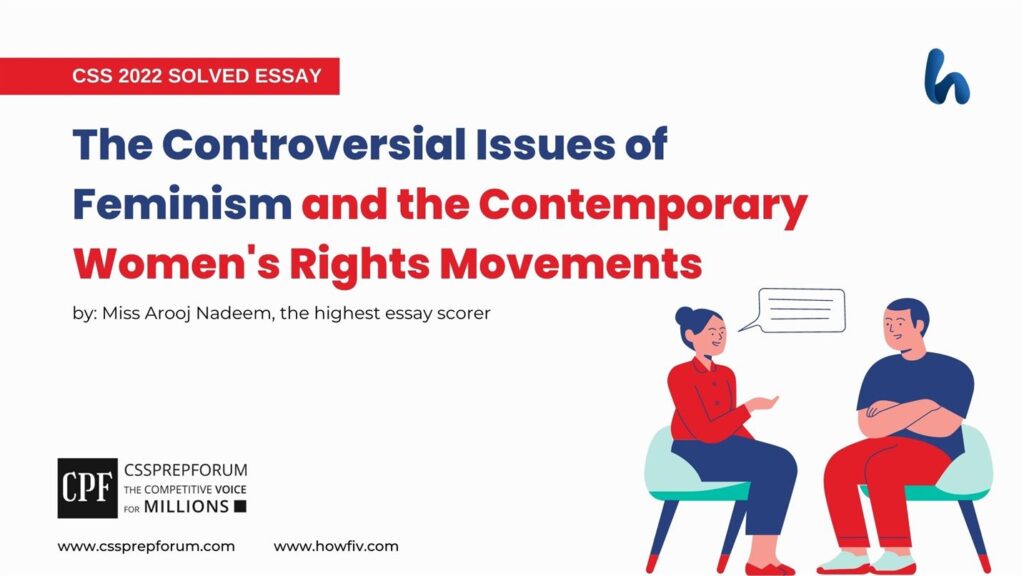
- Arooj Nadeem
- January 5, 2023
- CSS , CSS Essays , CSS Solved Essays , Current Affairs , Pakistan's Domestic Affairs , Pakistan's External Affairs , PMS , PMS Essays
- 38297 Views
CSS 2022 Solved Essay | The Controversial issues of feminism and the contemporary women’s rights movements | CSS and PMS Solved Essays by Sir Syed Kazim Ali Students
Arooj Nadeem , who scored the highest marks in PMS Punjab essay paper, has attempted the essay “ The Controversial issues of feminism and the contemporary women’s rights movements ” on the given pattern, which Sir Syed Kazim Ali teaches his students. Sir Syed Kazim Ali has been Pakistan’s top English writing and CSS, PMS essay and precis coach with the highest success rate of his students. The essay is uploaded to help other competitive aspirants learn and practice essay writing techniques and patterns.

1- Introduction
Women’s struggle for equality and the cessation of oppression against them have been partly won by acquiring the right to vote and equal access to education through many waves of feminism. Nevertheless, they are still disproportionally affected by violence and discrimination in every aspect of life, primarily because of the contemporary women’s rights movements, maligning further the controversial issues of feminism.
2- An overview of the concept of feminism 3- Explaining the contemporary women’s rights movements 4- Where do the controversial issues of feminism stand in the contemporary women’s rights movements?
- ✓ Argument : The MeToo Movement shifted ‘innocent until proven guilty to ‘guilty until proven innocent, paving the way for false allegations Case in point: False allegation of harassment forced a lecturer in MAO College to kill himself
- ✓ Argument: The verdict given by the Supreme Court of the U.S. in the Roe vs Wade case made the government of America face a continuous backslash Case in Point: The anti-abortion movement in America
- ✓ Argument: The emergence of radical feminism – as a wider, man-hating, and notorious contemporary movement – propelling the non-ending Matriarchal Vs Patriarchal debate Case in Point: Robin Morgan – A renowned American Journalist and social activist – defends ‘man-hating’ as the right of the oppressed class to hate the class that is oppressing them
- ✓ Argument: Postmodernism and the protests from the LGBTI community changed the whole structure of feminist movements but for the worse Case in point: According to Human Rights Watch, Qatar Preventive Security Department forces have arbitrarily arrested lesbian, gay, bisexual, transgender, and Queer (LGBTQ) people and subjected them to ill-treatment in detention
- ✓ Argument : The ongoing debate between liberal and radical feminists impeding the achievements of feminism in general and women empowerment in particular Case in Point: Unlike the more reformist approach of liberal feminism, radical feminists reject the prevailing order altogether, advocating separatism at large
4- The case study of Pakistan
- ✓ The controversies surrounding Aurat March
5- Way forward to address the crisis of Modern-day feminism controversies
- ✓ To prefer more inclusivity in the contemporary women’s rights movements
- ✓ To put forward a more reformative approach
- ✓ To strengthen the legislation
- ✓ To invigorate Mainstreaming and awareness campaigns
6- Critical analysis 7- Conclusion

Feminism, over the years, has come out as a movement to end sexist exploitation and oppression to achieve gender equality in law and practice for all genders, particularly women. However, the controversial issues linked with feminism, either directly or indirectly, have affected the women’s rights movements in the modern world. For instance, the ongoing anti-abortion movement in the U.S. – following the Roe Vs Wade case – has propelled a liberal Vs cultural feminism debate, impeding the achievements of feminism as a whole . Thus, the current developments in the feminist culture of the world have taken over the prime time where some feminists have been displaying the unreal meaning of feminism that, consequently, has transformed the whole idea of feminism into nothing more than a cliché concept. Furthermore, the Metoo movement resulting in fake harassment cases, the notorious men-hating radical feminist movement, and the protests from the LGBTQ community in the wake of postmodernism have changed contemporary women’s rights movements for the worse. Pakistan, being no exception, has also been facing controversies starting from Aurat March slogans to the Transgender Persons (Protection of Rights) Act 2022. Nonetheless, concrete steps that include an inclusive and culturally relevant approach and invigorating awareness campaigns are necessary to emancipate the contemporary women’s rights movement from the above-stated controversies. This essay sheds light on how the controversial issue of feminism has affected the women’s rights movements and also explains how the controversies could be eradicated.
“I didn’t fight to get women out from behind vacuum cleaners to get them onto the board of Hoover.” Germaine Greer
Before elucidating the controversial issues affecting the contemporary women’s rights movements, it is pertinent to contextualize feminism. Feminism, by and large, entails the idea of gender equality and women empowerment at political, economic, and, above all, social levels. Although initiated in the West, the idea of feminism is manifested worldwide. Being an interdisciplinary approach, it has addressed every inequality and discrimination irrespective of gender, religion, and nationality. For instance, the four waves of feminist movements – diverse in nature – have helped the world community. Thus, from getting the right to vote to addressing the gender pay gaps, feminism has come a long way.
To begin with, from global marches to social media campaigns, women are raising their voices and calling out sexual harassment gender pay gap and demanding women’s political representation. These movements not only strive to end gender discrimination at all levels but also endorse a more reformative, intersectional, and inclusive approach. As a result, these ongoing liberation movements consistently play their due role in shaping public opinion and creating awareness among the masses to empower women. Moreover, from holding perpetrators accountable for violence against women to changing social policies and norms globally, these movements have brought the concept of feminism to the main stage. Thus, the current feminist movements have been the most influential globally.
Having discussed what the ongoing movements for women’s empowerment entail, it is imperative to dive deep into where the controversial issues of feminism stand in the contemporary WRMs.
In the first place, the challenge of proving oneself innocent in the wake of the Metoo movement – a social media movement against sexual abuse, harassment, and rape culture– has inflicted harm upon the ongoing women’s rights approach. Several kinds of research have been conducted showing a majority of respondents, both male and female, with the headset that the movement has made it harder for men to interact with women, especially in the workplace. Moreover, along with the onset of this movement, there have come stories of men being afraid of what might happen if they were falsely accused. For instance, a false allegation of harassment following the Metoo movement forced a lecturer at MAO College Lahore to end his life. Hence, this ongoing movement has shifted the pendulum swings from ‘innocent until proven guilty’ to ‘guilty until proven innocent’ and paved the way for false allegations, creating controversy.
Moving ahead, the anti-abortion campaigns in the USA to reverse the Roe v. Wade decision — a verdict given by the Supreme Court of America making abortion legal — has added salt to the fire. The proponents of this movement and many right-to-life organizations claim that abortion not only results in mental health problems but also damages future fertility and is a cause of breast cancer. The medical professional organizations and pro-choice followers, however, are of contradictory viewpoints. Thus, this ongoing debate has made the government of America face a continuous backlash and promote legislative amendments that would broadly restrict abortion. For example, in June 2022, the Supreme Court overturned Roe v. Wade, ending federal abortion rights and allowing individual states to regulate their own abortion laws. Consequently, the overlapping controversy of abortion rights has overshadowed the actual purpose of contemporary women’s rights movements.
Apart from the anti-abortion movements, the polluted ideology of radical feminism coupled with a wider, man-hating, and notorious contemporary movement has, once again, propelled the non-ending matriarchal vs matriarchal debate. Starting as a movement to eliminate the social domination of women by men, it opposes the existing political and hierarchical social structures. It aims to dismantle patriarchy rather than adjust to the system through legislative changes. Although initiated as a progressive movement, it has now changed into an anti-male approach rubbing salt in the wounds of cultural and liberal feminists who are of the opposite viewpoint. For instance, Robin Morgan – A renowned American journalist and social activist – has publicly defended this ‘man-hating’ approach as the right of the oppressed class to hate the class oppressing them. Therefore, it has created a controversy highlighting the internal challenges of these contemporary feminist approaches.
“I feel that ‘man-hating’ is an honorable and viable political act, that the oppressed have a right to class-hatred against the class that is oppressing them.” Robin Morgan

Furthermore, the challenges imposed in the wake of ongoing lesbian, gay, bisexual, transgender, and Queer (LGBTQ) protests have further aggravated the controversies surrounding the modern-day movements. From Disney — one of the world’s biggest entertainment companies — facing backlash over non-representation of the LGBTQ community in its content to an LGBTQ event at a Florida church igniting public anger, postmodernism has changed the whole structure of feminism, but for the worse. Moreover, many countries face allegations and backlash due to their laws regarding the LGBTQ community. To illustrate, Qatar, the first Middle Eastern and Muslim country to host the FIFA World cup 2022, had to face global backlash. According to Human Rights Watch (HRW), Qatar Preventive Security Department forces have arbitrarily arrested LGBTQ people and subjected them to ill-treatment in detention. Thus, these ongoing debates over the LGBTQ community are exacerbating the whole situation.
Besides this, the contemporary struggle between liberal and radical feminists is also impeding the achievements and struggles of women’s rights movements. This polarization has reached a level nearing its apex in the past decade. Consequently, feminism today is divided into two camps, causing the concept’s unity to be torn to pieces. To illustrate, unlike the pragmatic approach of liberal feminism, radical feminists aim for a radical change and reject the existing order altogether, advocating separatism at large. Hence, the modern women’s rights movements are witnessing a series of controversies blocking the true idea of women’s empowerment from prevailing.
Pakistan, being no exception, has also been the victim of these controversial issues. To elaborate, the controversy of Aurat March, although started as a movement to put an end to domestic violence and sexual harassment, has impeded the achievements of women empowerment in the country. The slogans like ‘ mera jism, meri marzi ‘ continue to stir disagreement at the national level. Proponents are of the view that the slogan highlights sensitive issues like marital rape. Still, certain sections of the society view it as an attempt to impose “western debauchery” in Pakistan. For instance, the National Assembly Standing Committee on Information and Broadcasting urged the Pakistan Electronic Media Regulatory Authority (PEMRA) to stop the telecast of such slogans to curb moral indecency. Thus, the controversies surrounding the movement are darkening the image of feminism in the country.
With the above emanation of various controversies affecting the contemporary women’s rights movements, it has become clear that some concrete steps addressing the crisis of Modern day controversial issues have become the need of the hour. The compelling first step to alleviate these controversies is to bring more inclusivity to the modern-day women’s rights movements. By inclusivity, it is meant to resolve the internal disputes between feminist movements. Thereby, the concept of women’s empowerment can only become uncontroversial if proponents of every movement would stand together supporting the idea of women’s empowerment at large explicitly.
Identically, the world needs to apply the reformative, and not aggressive, approach to bring forth a softer image of feminism. To elaborate, a critical conscious effort using a pluralistic lens is the need of the hour to abolish the controversies surrounding the contemporary feminist discourse. While stressing some points regarding women’s empowerment, feminists today deliberately try to neglect the sensitivity and irrelevancy of it. Moreover, the interrelatedness of various forms of oppression and discrimination needs a framework to propose a solution for all society sections. Thus, the foundation of future feminist struggle must be built on reformation and relevance.
Lastly, there’s a dire need to strengthen the existing laws and make constitutional amendments that are required in the 21st century. It is because women cannot be protected socially if they face legal oppression. Also, more than just ending sexism and strengthening the legislation, the world needs to invigorate mainstreaming and awareness campaigns; because only then the long-lasting impact of these controversial issues would be lifted from the modern-day movements.
To critically analyze, the idea of women’s empowerment can only prevail in its true essence when the sentiments of the masses are echoed without any contest. Allegedly, women across the globe, owing to the virtue of their inherited sex, share a common oppression at all levels. Nevertheless, the division of feminism into various movements has made the whole concept debatable, paving the way for controversies to originate. Owing to these controversial issues, it, however, becomes difficult, if not impossible, for the real concept of feminism to live up to its cause. Thus, the actual ideology of ongoing women empowerment movements gets polluted.
In a nutshell, the overlapping controversies in the modern women’s rights trends have overpowered the continuous struggles of feminism. Moreover, these controversial issues have paved the way for many debates between cultural, liberal, radical, and postmodern feminist movements. Nonetheless, if taken sagaciously, some concrete measures can help emancipate from these controversial issues. Hence, a shift from a radical voice to a global one, from self-interest to mutual interaction, and from feminist diversity to feminist solidarity is necessary to bring forth the philanthropy of feminism to the main stage.
“ Feminist solidarity rooted in a commitment to progressive politics must include a space for rigorous critique and dissent, or we are doomed to reproduce in dominated communities – the very form of domination we seek to oppose. ” Bell Hooks
CSS Solved Past Papers’ Essays
Looking for the last ten years of CSS and PMS Solved Essays and want to know how Sir Kazim’s students write and score the highest marks in the essays’ papers? Then, click on the CSS Solved Essays to start reading them. CSS Solved Essays
CSS 2022 Solved Essays
Are you searching for CSS 2022 solved essays by Sir Syed Kazim Ali’s students? Click on any of the topics to start reading the solved essays.
Articles Might Interest You!
The following are some of the most important articles for CSS and PMS aspirants. Click on any to start reading.
Recent Posts

Top Categories
Cssprepforum, education company.

cssprepforum.com
Welcome to Cssprepforum, Pakistan’s largest learning management system (LMS) with millions of questions along with their logical explanations educating millions of learners, students, aspirants, teachers, professors, and parents preparing for a successful future.
Founder: Syed Kazim Ali Founded: 2020 Phone: +92-332-6105-842 +92-300-6322-446 Email: [email protected] Students Served: 10 Million Daily Learners: 50,000 Offered Courses: Visit Courses
More Courses

Basic English Grammar and Writing Course
Extensive English Essay & Precis Course for CSS and PMS

CSS English Essay and Precis Crash Course for 2023
Subscribe to our mailing list to receives daily updates direct to your inbox.

- CSS Solved Essays
- CSS Solved GSA
- CSS Solved PA
- CSS Solved Islamiat
- Current Affairs
- All Courses
- Writers Club
- All Authors
- All Members
- All Teachers
- Become an Author
- Who is Sir Syed Kazim Ali?
- Privacy Policy
CssPrepForum is Pakistan’s largest and greatest platform for CSS, PMS, FPSC, PPSC, SPSC, KPPSC, AJKPSC, BPSC, GBPSC, NTS, and other One Paper 100 Marks MCQs exams’ students. It has become Pakistan’s most trusted website among CSS, PMS students for their exams’ preparation because of its high-quality preparation material.
@ 2023 Cssprepforum. All RightsReserved.

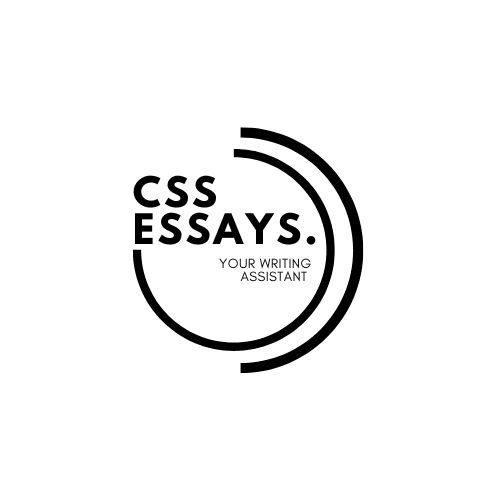
Gender Equality in Pakistan and the Rise of Feminism
Gender equality and the rise of feminism in Pakistan is an intricacie topic, with multiple cultural, social, and political influences at work to shape this subject matter. While substantial strides have been taken toward equality over recent years, true equality still requires considerable work on our part.
Strong patriarchal culture:
One of the main obstacles to gender equality in Pakistan is its long-standing patriarchal culture, which places value on men over women and reinforces traditional gender roles that limit opportunities available to women. Furthermore, religious and social customs such as purdah require women to cover themselves up when in public spaces such as mosques. This further marginalises women.
Feminism: In spite of these challenges, there has been an emerging movement in Pakistan to promote gender equality and the rights of women – often referred to as “feminism.” One main goal of this movement is breaking down traditional gender roles that limit opportunities available to women while also creating equal access to education, employment and political participation for them all.
Pakistan’s feminist movement has achieved many significant accomplishments over time, most notable of which being its widespread achievements.
One of the greatest achievements of Pakistan’s feminist movement has been an increase in female workforce participation rates, according to World Bank estimates. Accordingly, female labor force participation rates increased from 24% in 1990 to 34% by 2020 – still low compared with many other countries but an important step for Pakistani women.
Increased recognition and acceptance of women’s rights have contributed to greater understanding and awareness surrounding the matter.
Feminist activism in Pakistan has also helped raise awareness and acceptance of women’s rights. For example, in 2016 Pakistan passed the “Protection of Women Against Violence Act”, criminalizing domestic abuse while providing victims protection and support services.
Has Pakistan achieved gender equality?
Many women still face discrimination and violence on a daily basis, being denied education and employment opportunities and facing social and cultural barriers that need to be broken down in order to create an equitable society.
Gender equality and the rise of feminism in Pakistan is a complicated matter, affected by various cultural, social, and political influences. Although progress has been made over recent years, full equality still requires much work. Feminist movements in Pakistan have played an instrumental role in advocating for gender equality and women’s rights – they continue to act as agents of change today.
Pakistan’s economy is facing numerous challenges, such as high inflation, large trade deficits and an ever-widening budget deficit. One way to address these obstacles and promote economic growth would be increasing participation of women in the workforce – they make up half of population after all and their presence could make a dramatic difference to Pakistan’s economic development.
Increased participation by women in the workforce
First and foremost, expanding women’s participation in the workforce can contribute to economic expansion. When women can work and earn a living they can significantly enhance the economy through increased productivity and consumption; moreover, women tend to invest more in their families and communities which further fuels economic expansion.
Address issues of poverty and inequality
Second, more women in the workforce can help address issues of poverty and inequality. Women often face discrimination and barriers to education and employment that keep them living in poverty. Increasing women’s participation can reduce poverty while simultaneously creating greater equality.
Thirdly, increasing women’s participation in the workforce can also help improve Pakistan’s balance of trade. More women entering the labor force will help contribute to increasing exports. While decreasing imports; this can reduce its trade deficit and improve its balance of payments.
Increased female employment can help strengthen a nation’s overall economic stability. When women can work and earn an income to support themselves and their families independently of government assistance. It reduces government burden as well as improving social stability.
Pakistan’s economy is facing several significant hurdles.
One way of meeting these challenges is increasing female participation in the workforce. Since women make up half of society and can have a dramatic effect on economic performance by driving economic growth. Addressing poverty and inequality issues. Improving balance of trade relations and stabilizing economies.
Pakistan has taken several steps to provide women with more active roles in both society and the workforce. Some key initiatives for women include:
Education: The government has made efforts to increase access to education for girls by building schools in rural areas and offering scholarships.
Legal Reforms: The government has passed several laws designed to safeguard women’s rights. Such as the “Protection of Women against Violence Act” and “Prevention of Anti-Women Practices Act”.
Economic Empowerment: To promote women’s economic empowerment, several initiatives have been undertaken by the government. For instance, they include “Benazir Income Support Program”. Which offers cash transfers to low-income families; and the “Prime Minister’s Youth Training Program”, which offers women training and skills development opportunities.
Political Participation: The government has taken several steps to increase women’s involvement in politics. Such as reserving seats for them in both the National Assembly and Provincial Assemblies and encouraging more of them to run for office.
Social Change: The government has undertaken various campaigns designed to change societal attitudes toward women and advance gender equality. Such as the “Aurat March” and Pink Taxi service for exclusively female customers.
Healthcare: The government has taken several steps to improve healthcare services for women and reduce maternal mortality rates. Such as the “Lady Health Worker Program” and the “Mother and Child Health Program”.
Support to Women Working:
The government has taken measures to assist women entering the workforce. Such as providing childcare facilities in workplace settings and encouraging employers to adopt flexible working hours. Additionally, women-led businesses have been actively promoted.
Noteworthy is the fact that women in Pakistan still face many barriers in attaining true equality. And many initiatives to support women have met resistance in terms of implementation and enforcement. Furthermore, some rights activists accuse the Government of discrimination, harassment and violence against women.
Gender equality and the rise of feminism in Pakistan is an intricate topic influenced by various cultural, social and political forces. Feminism in Pakistan has played a central role in advocating for gender equality. And the rights of women; its movement remains an important force for change today. Additionally, Pakistan’s Government has taken several steps to give women more active roles within its workforce and society. Such as providing more access to education; passing laws protecting these rights; increasing economic empowerment programs. Expanding political participation opportunities for women and launching social change campaigns as well as improving healthcare services provided for working women. Such as increasing education access; passing laws protecting rights of women while improving healthcare services support working women alike.
However, much remains to be done before women in Pakistan can achieve true equality. And many initiatives have faced difficulties in implementation and enforcement. Furthermore, the Government is facing criticism from women rights activists. Who contend they are not doing enough to empower women; more needs to be done to address systemic issues of discrimination, harassment and violence against them.
About Author
Muhammad Munib Rasool
See author's posts
Unveiling Alternative Pathways to Teaching
Online degree programs in the usa, brics expansion: implications for the global order and beyond, the path to css success and significance of online classes, the 2024 elections: a potential turning point for pakistani politics, pakistani women face equal opportunities as men, will pakistan legalize bitcoin in the future, investment in education is important, is bitcoin going to replace the dollar soon, how to get an online degree in the usa, subscribe to our mailing list to get the new updates.
We don't spam.
Climate Change, Flood and it’s impact on Pakistan Economy.
Literacy and democracy: the challenges and solutions in pakistan.
Well that’s awesome work, it helps me alot
Thank you 😌
- Pingback: Poverty Alleviation in Pakistan - Css Essays
Good work sir
Leave a Reply Cancel reply
Your email address will not be published. Required fields are marked *
Save my name, email, and website in this browser for the next time I comment.
Adblock Detected
Academia.edu no longer supports Internet Explorer.
To browse Academia.edu and the wider internet faster and more securely, please take a few seconds to upgrade your browser .
Enter the email address you signed up with and we'll email you a reset link.
- We're Hiring!
- Help Center

Contradictions and Ambiguities of Feminism in Pakistan: Exploring the 4th Wave

2020, Rubina Saigol and Nida Usman Chaudhary, 'Contradictions and Ambiguities of Feminism in Pakistan: Exploring the 4th Wave', Friedrich-Ebert-Stiftung (FES)
Since 2018 a new wave of feminism has swept across Pakistan consisting mainly of a younger generation of women and other genders. The new, contemporary activism from the 1950s to the 1990s which were focused on challenging the public, socio-legal sphere, that is, the state. The current fourth wave however, marked a tectonic shift in the feminist landscape in Pakistan and inaugurated an entirely new phase in feminist struggles by challenging and deconstructing the hallowed private sphere of the family, community, and society. The marginalised ideas of non-binary persons, non-reproductive and alternative sexual expression were mainstreamed. By reclaiming public spaces and inserting the personal into the heart of the political, the new wave feminists at once dissolved the false dichotomies of the public/private, productive/reproductive, and personal/ political spheres. Published by Friedrich-Ebert-Stiftung (FES) in 2020.
Related Papers
Rubina Saigol, 'The Past, Present and Future of Feminist Activism in Pakistan', The Herald
Dr. Rubina Saigol
Aurat March marks a tectonic shift from the previous articulations of feminism in Pakistan. It would not be far-fetched to say that it has inaugurated a new phase in feminism, qualitatively different from the earlier movements for women rights. While the past expressions of feminism laid the foundation for what we see today, the radical shift of feminist politics from a focus on the public sphere to the private one – from the state and the society to home and family – manifests nothing short of a revolutionary impulse. Feminism in Pakistan has come of age as it unabashedly asserts that the personal is political and that the patriarchal divide between the public and the private is ultimately false. Published in the Herald on 15 July 2019.
Since March 2019, local NGOs in Pakistan are organizing “Aurat March” (Women March) in month of March to raise voice against indigenous feminine issues and violence against women. In hindu-originated society like Pakistan, where Islamic women rights haven’t implemented in its true spirit yet, digesting such a “liberal” act is not easily digestible. Thus different intellectual classes took social media on fire to outdo each other and central topic of cross arguments was slogans raised in the March. Raising slogans is a traditional way of weaker class in society to demonstrate against discrimination and emit emotional suffocation. To study underlying meanings of much debated slogans of Aurat March in Pakistan, discourse analysis is employed which also facilitated to indicate emerging dimension socio-religious debates and opinions towards feminism in Pakistan.
Faisal Qayyum
Hayatian Journal of Linguistics and Literature
Khalil Ahmad
The original intent of the feminist movement in America and Europe was to give men and women the same rights. In Pakistani culture and norms, women are already treated with respect. But when Western feminism spread to Pakistan, women started to assert themselves because they felt they had the full backing of Western nations, the media, NGOs, the amended legislation, and elite groups in society. They continued to abuse cultural norms under the guise of feminism to call for supremacy over males rather than equality. Rights for women should be granted, but not at the expense of rights for men or at abuse of cultural norms. Using observation as a descriptive research method of various phenomena, I argue that Pakistani society has been negatively impacted by Western feminism and that women are now seeking supremacy rather than equality. At the end I offer a reconciliatory solution for the dual conflict of women rights with men's rights on one side and cultural norms on the other.
Shireen Rizvi
Aiesha Qureshi
Feminist Dissent
Nida Kirmani
This article challenges the binary framework within which women in Pakistan have been viewed, by political actors, the state, and more broadly as well, as either 'secular/feminist/godless/Westernised' or 'authentic/ Islamic/traditional'. It begins by contextualising the genealogy of this binary in Pakistan's colonial and political history, which has led to the state's side-lining of moderate religious voices and promotion of right-wing religious parties that suited its political objectives. Even the scholarship produced by the women's movement, which arose in response to a politicised Islamisation process begun under military rule in the 1980s, inadvertently reproduces this binary as activists sought to assert a rights-based agenda and were supported by international donor funds. A shift in recent years in response to West-based international scholarship post 9/11, which focusses on the subjectivity and organisation of Islamist women, has influenced work on women in Pakistan as well as a donor turn to funding faith-based initiatives. The paper then examines current gender justice movements that emerged independently at a grassroots level, and draws attention to their effectiveness despite lack of strong linkages with either the women's movement or Islamist women. These include rights-based mobilisations by peasant women, community health workers, tribal women in the Taliban/conflict-affected northwest , and transgender activism. It ends by challenging feminists to engage more deeply with these forms of activism.
Shirin Zubair
Mehreen Qaisar
The objective of present research was to assess the content of placards used in Women’s March in Pakistan and analyze it with feminist perspective. Qualitative research method was used to conduct present research and content analysis technique has been used to analyze content of placards used previously in the Women’s March. Feminist movement is facing many challenges in the Pakistan. Present article is an effort to address such issues regarding patriarchy & discrimination against women from the perspective of Islamic feminism which dares to challenge Patriarchal mindset & discriminatory practices against women both in Private & Public Sphere of life. KEYWORDS: Society & Gender, Popular Culture, Patriarchy, Patriarchal mindset, Pakistani Society, gender Equality, Women’s March, Misogyny, Islamic Feminism
RELATED PAPERS
英国西伦敦大学文凭成绩单原版制作【Q微:9935-33701】,英国大学留信网认证,雅思托福成绩单,国外大学病假条样本。
Revista Palmas
Paul Sylvester
Dominique Bouilliez
Pramesh Shah
Fritz C. Staub
Taynara Mighelão
Global Health Action
Eric Diboulo
Journal of Animal Science
Waldo Pavez
CERN European Organization for Nuclear Research - Zenodo
Juan Canchari
Japanese Journal of Neurosurgery
Ignacio Cabrera-Samith
Arquivos Brasileiros de Cardiologia
Vera Lucia Portal
Revue des Maladies Respiratoires
Hajer Racil
PERBANDINGA BRICK-AND MORTAR AND KLIK-AND-MORTAR
Amanda Aprilia
Ciência Rural
Geni Carmen Zanol
Journal of AOAC INTERNATIONAL
Ardeshir Shokrollahi
Tanel Rungi
diana ikasari
Otoriter Neoliberalizmin Gölgesinde: Kent Mekan İnsan
neslihan demirtas milz
AFRICAN JOURNAL OF BIOTECHNOLOGY
Farkhondeh Nemati
Patricia Kandus
American Journal of Hypertension
Monica Maria Bernardes Dinis
Enrique Perez Zapatero
Journal of Experimental Social Psychology
rafay Siddiqui
RELATED TOPICS
- We're Hiring!
- Help Center
- Find new research papers in:
- Health Sciences
- Earth Sciences
- Cognitive Science
- Mathematics
- Computer Science
- Academia ©2024
CSS GENDER STUDIES Syllabus
Paper: gender studies (100 marks).
I. Introduction to Gender Studies Introduction to Gender Studies Difference between Gender and Women Studies Multi-disciplinary nature of Gender Studies Autonomy vs. Integration Debate in Gender Studies Status of Gender Studies in Pakistan
II. Social Construction of Gender Historicizing Constructionism Problematizing the category of “Sex”: Queer Theory Is “Sex” socially determined, too? Masculinities and Femininity Nature versus Culture: A Debate in Gender Development
III. Feminist Theories and Practice What is Feminism Liberal Feminism Radical Feminism Marxist/Socialist Feminism Psychoanalytical Feminism Men’s Feminism Postmodern Feminism
IV. Feminist Movements Feminist Movements in the West. First Wave, Second Wave and Third Wave Feminism. United Nation Conferences on Women, Feminist Movements in Pakistan.
V. Gender and Development Colonial and Capitalistic Perspectives of Gender Gender Analysis of Development Theories; Modernization Theory, World System Theory, Dependency Theory, Structural Functionalism. Gender Approaches to Development: Women in Development (WID), Women and Development (WAD), Gender and Development (GAD); Gender Critique of Structural Adjustment Policies (SAPs). Globalization and Gender
VI. Status of Women in Pakistan Status of Women’s health in Pakistan Status of Women in Education Women and Employment Women and Law
VII. Gender and Governance Defining Governance Suffragist Movement Gender Issues in Women as Voters Gender Issues in Women as Candidates Gender Issues in Women as Representatives Impact of Political Quota in Pakistan
VIII. Gender Based Violence Defining Gender Based Violence Theories of Violence against Women Structural and Direct Forms of Violence Strategies to Eliminate Violence against Women
IX. Case Studies of: Mukhtaran Mai Mallala Yousaf Zai Shermin Ubaid Chinoy
- EXPRESS NEWS
- URDU E-PAPER
- ENGLISH E-PAPER
- SINDHI E-PAPER
- CRICKET PAKISTAN
- EXPRESS LIVE
- CAMPUS GURU
- EXPRESS ENTERTAINMENT
- FOOD TRIBUNE
Feminism in Pakistan: A brief history
Pakistani women have gone through great struggle to secure their basic rights
12th February, 1983 - Lahore, Pakistan Women of the Women’s Action Forum (WAF) and Pakistan Women Lawyers’ Association (PWLA) beating baton-charged at a rally agaInst the law of evidence.
@salman: Ppp is a socialist party. You lot seem to confuse liberalism with socialism which speaks volumes on our illiteracy about politics, and the failure of democracy in general. Please clarify, the right means the religious parties. The left means the socialist parties. Socialism is the opposite of religiosity in politics, originating from russia i believe, where socialism in simple terms puts the state and the welfare of the people at the fore, while leaving religion in the background. On the other hand liberalism is not a political leaning. It is much more encompassing. The jist of liberalism is that one should be open to all thoughts and have empathy/tolerance for everyone. The only thing not acceptable in liberalism is violence or physical abuse against any group for whatever cause. I hope it clarifies things for you lot. But if for some twisted reason your iq is too low for such a long reply, if you see red in a flag, think socialist.
Mehreen Ovais claims that women's rights were advanced during Pervez Musharaff's rule. However, Musharaff had commented publicly that women who want to emigrate to Canada falsely claim that they have been raped. Mehreen has ignored this chauvinistic statement which had created an outrage among international activists. Perhaps she should study the basic principles of feminism, and scan the daily papers before writing on the topic.
In addition to Musharaff, Ovais presents Benazir Bhutto, and PPP supporter Fouzia Saeed, as the champions of women's rights. In spite of being a woman, Benazir did not address gender inequalities in Pakistan. She paid little in agricultural taxes to redistribute resources. Consequently, poor women could not access the basic necessities of life. During Benazir's tenure, public budgets were cut and defense expenditure remained high. This misallocation of resources negatively impacted ordinary women, as access to health and education is crucial for them. Moreover, Bhutto did not create public housing projects for women, or establish free of charge quality schools for them. Specifically, public health was allocated only 0.8 percent of the Gross Domestic Product (GDP), while 2.4 per cent of (GDP) was allocated to education during Bhutto's term. It follows that privileged women such as Benazir Bhutto and Fouzia Saeed cannot be assumed to fight for the rights of oppressed women, simply because they happen to be women. Their class interests certainly come first. --ASMA SIDDIQI
yeah feminism. Seriously ? who cares. Least priority.
@ovais: But... Pakistan People's Party (PPP) is a liberal party!? I'm confused. Kidding aside, Ovais, you hit the nail on its head.
"In our country, a MPA can stand up in the Parliament and say burying a woman alive is a part of our culture and get away with it." That MPA was from the Pakistan Peoples Party ... Its appalling when their MPA/ MNA talk about women rights
Shame on all of them
Comments are moderated and generally will be posted if they are on-topic and not abusive.
For more information, please see our Comments FAQ

Yousuf Raza Gilani Wins Senate Chair Unopposed Amid PTI Boycott

Palestinian Statehood Bid: UN's Crucial Decision And Israel's Response

Significant Encounter: Blue Whale Sightings in Pakistani Waters

Iranian Foreign Minister Inaugurates New Consulate Amidst Tensions in Damascus

Palestine's UN Membership Bid Revisited: Security Council Acts

Nicaragua Challenges Germany’s Support for Israel | ICJ Hearing Insights

Israeli Prime Minister Reveals Plans of Invasion of Rafah Amidst Ceasefire Talks

Stunning 2024 Solar Eclipse Sweeps Across North America

Abu Dhabi Canvas: Painting the City with Creativity

Celebrity Eclipse Fever: 2017's Star-Studded Solar Spectacle

Shift in Strategy: Israeli Troops Exit Southern Gaza

Babar Azam: Cricket Insights & Personal Revelations

Ex Jamaat-i-Islami Chief Criticizes Government Over Inflation, Announces Nationwide Protests
Recommended Stories
Transport troubles for the working woman
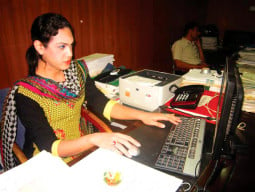
Transcending genders: Working as a clerk at the commissioner’s office, Eraj Aftab wants true gender equality
Emma Watson works her magic at the UN

Fashion brand Brandy Melville's dark side exposed in chilling new documentary
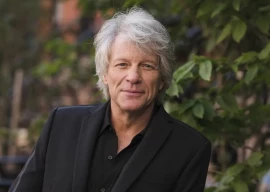
“It’s up to God at this point” – Jon Bon Jovi on recovery after surgery
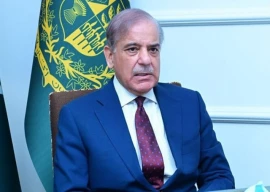
PM Shehbaz pays tribute to security forces for ensuring peace during Eid

“Game of Thrones” star Peter Dinklage to play Dr. Dillamond in “Wicked”
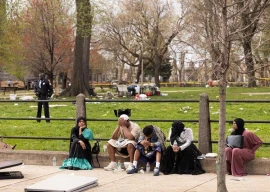
Three injured in shooting during Eidul Fitr celebrations in Philadelphia

Joaquin Phoenix’s Joker, Lady Gaga’s Harley Quinn join forces in new trailer for ‘Joker 2’

The Home Edit

7 Wardrobe Colour Schemes to Embrace This Spring

On Express Urdu

علم ِفلکیات کی روشنی میں آپ کا یہ ہفتہ

روحانی دوست

قصوں کے میلے سے کچھ سوغاتیں

لگتا ہے کل کی بات ہو !

الہ دین کے اسٹیشن پر قدم رکھا تو لگا جیسے کسی گلاب کے باغ میں قدم رکھ دیا ہے
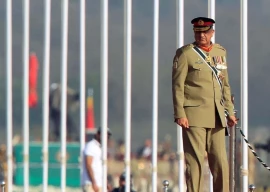
FIA to address Bajwa complaint as per law
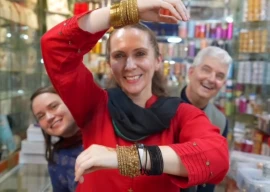
US consulate general joins Karachi's Chaand Raat festivities
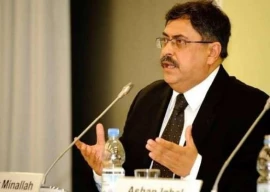
Justice Minallah puts ball in state’s court

Shawwal moon sighted, nation to celebrate Eidul Fitr today
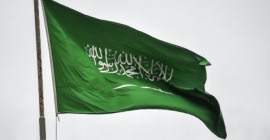
Saudis to up their deposits in SBP by $2b

Man attempts suicide at Makkah’s Grand Mosque

Genocides — unseen epidemics

The state of the Muslim world

Waiting is like killing life
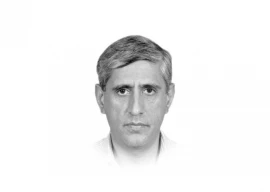
Slaying the TTP hydra

Why is deterrence not working against Israel?

Posthumous inequity
- Life & Style
- Prayer Timing Pakistan
- Ramazan Calendar Pakistan
- Weather Forecast Pakistan
- Online Advertising
- Subscribe to the Paper
- Style Guide
- Privacy Policy
- Code of ethics
This material may not be published, broadcast, rewritten, redistributed or derived from. Unless otherwise stated, all content is copyrighted © 2024 The Express Tribune.

The past, present and future of feminist activism in Pakistan
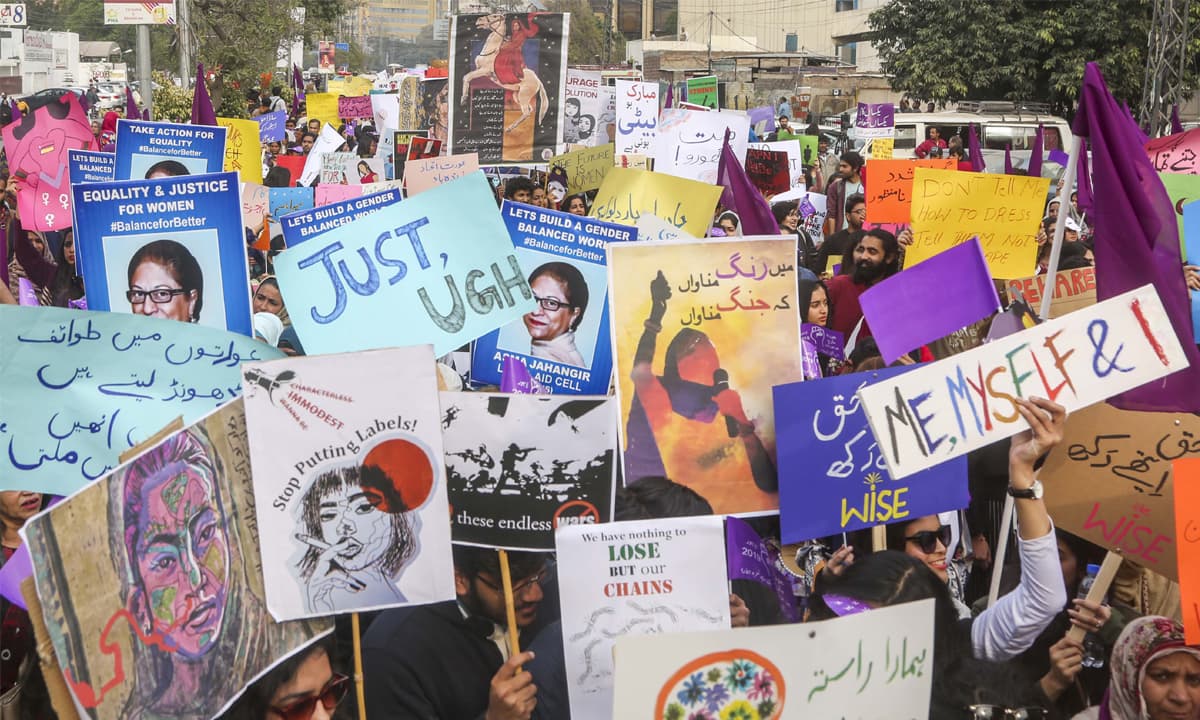
Interviews conducted by Manal Khan and Sameen Hayat.
Aurat March 2019 was one of the most exciting feminist events in recent years. Its sheer scale, magnitude, diversity and inclusivity were unprecedented. Women belonging to different social classes, regions, religions, ethnicities and sects came together on a common platform to protest the multiple patriarchies that control, limit and constrain their self-expression and basic rights. From home-based workers to teachers, from transgender to queer — all protested in their unique and innovative ways. Men and boys in tow, carrying supportive placards, the marchers reflected unity within diversity, seldom seen in Pakistan’s polarised and divisive social landscape.
Carried out in many cities across Pakistan, the march took both its supporters and detractors by surprise. No one expected such a big turnout and in so many cities with truth-laden and daring placards. The intensity of the vitriol seen in the backlash to the march testifies to its enormous success — it certainly managed to hit patriarchy where it hurts.
Aurat March 2019 also marks a tectonic shift from the previous articulations of feminism in Pakistan. It would not be far-fetched to say that it has inaugurated a new phase in feminism, qualitatively different from the earlier movements for women rights. While the past expressions of feminism laid the foundation for what we see today, the radical shift of feminist politics from a focus on the public sphere to the private one – from the state and the society to home and family – manifests nothing short of a revolutionary impulse. Feminism in Pakistan has come of age as it unabashedly asserts that the personal is political and that the patriarchal divide between the public and the private is ultimately false.
The social, political and historical context of each previous form of feminism was different and the feminist issues of each era arose from particular moments in national and global histories. In the early years of Pakistan’s formation, the wounds inflicted by the bloodstained Partition were fresh. Women activists were focused on welfare issues, such as the rehabilitation of refugees, because that kind of work had social respectability within the traditional cultural milieu.
Pakistan also inherited many social issues – such as polygamy, purdah, child marriage, inheritance, divorce and the right to education – from the pre-Partition times. Many of the demands for social and legal reforms on these issues were acceptable even within the bounds of religion. So, there was no fear of women upsetting the applecart when they asked for these reforms.

The 1960s saw the proliferation of women’s welfare and development organisations but it was the All Pakistan Women’s Association (APWA) that became the face of the women’s movement in the country in that decade. The passage of the Muslim Family Laws Ordinance, pushed by APWA, reflected a minor ingress by the state in the private sphere as it placed certain procedural limits on the men’s arbitrary right of divorce and gave women some rights regarding child custody and maintenance. Even the small changes repeatedly stirred public controversy with clerics clamouring for the reversal of the ordinance.
APWA’s approach was characterised by two salient features: one, the focus on social welfare and development work involving girls’ education and income-generation activities; two, the collaboration with the state to achieve its aims. APWA shied away from an overtly political position in that it did not contest dictatorship. It did not ruffle any religious or political feathers and preferred to play it safe even when Fatima Jinnah, a woman, remained the sole campaigner against dictatorship. The cooperation and collaboration of women leaders with the state to attain women’s rights continued during the civilian rule of the Pakistan Peoples Party (1971-1977).
The feminist movement and the women’s rights struggle that arose in the 1980s, spearheaded by Women’s Action Forum (WAF) in the urban areas and Sindhiani Tehreek in rural Sindh, were significant for their overtly political stance. As both these movements were formed in the context of a hypernationalist absolute dictatorship that relied on a particular version of religion for legitimacy, they consistently challenged both the military rule and the incursion of religion in politics. WAF struggled for a democratic, inclusive, plural and secular state while Sindhiani Tehreek strove for an end to feudalism and patriarchy, sought the restoration of democracy and championed the principle of federalism and provincial autonomy.
These movements represent a significant break from the former paradigm of collaboration and cooperation with the state. They challenged patriarchal power in every domain — political, religious and legal. Unlike the welfare and social uplift-oriented movements of the 1960s, the struggles launched by women in the 1980s were essentially political movements anchored in the ideas of democracy, basic rights and sociopolitical change. As they confronted the authoritarian state, women in these movements could ill-afford to play it safe like their predecessors. They, therefore, engaged in frequent street protests and demonstrations. They took risks and were occasionally beaten, jailed, baton-charged and otherwise threatened by the dominant religious-military patriarchies of the time.
WAF had to respond quickly and frequently because of the rapid pace at which the regime was promulgating discriminatory laws and taking anti-women measures. The focus of the WAF members was squarely on the public sphere where the state machinery was utilised to brutally repress anyone who dared to stand up to the dictatorship. The aggressive and intrusive reconstitution of the private sphere, through instruments such as the Hudood Ordinances, had to be resisted at the public level by fighting legal cases, speaking up and protesting on the street.
Given the dizzying pace at which the regime and its religious allies had to be countered, there was little room for internal reflection in WAF. Although most of its founders had a strong feminist background and a feminist lens for unpacking the dominant narratives, the space for interrogating private life had shrunk. WAF members knew that patriarchies work through the bodies of women and write their strictures on those bodies. They also understood that the traditional family, which controls and organises the human body and sexuality, is the mainstay of patriarchies. Yet they were constantly occupied with contesting the state’s laws being drawn from a singular interpretation of religion. In private conversations, the politics of the body in the body politic were often discussed but, publicly, WAF was only engaged in countering the imperious state.
Some of the reasons for the reticence were internal. WAF was composed of a diverse set of organisations and individuals with differing perspectives on religion, culture and tradition. This diversity grew out of the necessity to have maximum numbers to confront a heavy-handed regime. WAF was reluctant to take too radical a stand on the body, sexuality and the family as many of its members were religious, conservative and deeply embedded in traditional family systems. The conversations on the body, sexuality and the freedom to express oneself in one’s own way did not become a part of the official public agenda of WAF.
Ironically, while WAF members avoided public discussions on the body and sexuality, the state and religious clerics had no such qualms; their focus was squarely on the woman’s body — the need to conceal it, cover it, protect it and preserve it for its rightful ‘owner’. The state was consistently referring to sexuality (for example, in laws on fornication, zina), the veil and the four walls of the house — all designed to control the rebellious and potentially dangerous female body capable of irredeemable transgression.
This is where the new feminists break from the older generation and mark a powerful shift in the feminist landscape. Even as new feminism retains many of the older critiques of the state, fundamentalism and militarism and reflects the desire for equality and democracy, it reaffirms the personal and injects it right into the heart of the political. ‘My body, my will’, it tells patriarchy to its crestfallen face. ‘Warm your own food’, ‘I don’t have to warm your bed’, ‘don’t send me dick pics’ — in curt one-liners, the new young feminists reclaim their bodies, denounce sexual harassment, stake a claim to public space and challenge the gender division of labour on which rests the entire edifice of patriarchy.
The new wave of feminism includes people from all classes, genders, religions, cultures and sects without any discrimination or prejudice. The young feminists are diverse, yet inclusive, multiple yet one. There are no leaders or followers — they are all leaders and followers. The collective non-hierarchical manner of working and the refusal to take any funding is similar to the functioning practised by WAF and represents continuity with the past. But the entire framing of the narrative around the body, sexuality, personal choices and rights is new. The young groups of women say openly what their grandmothers could not dare to think and their mothers could not dare to speak.
They say what women have known for centuries but have not been able to voice. They have broken the silences imposed by various patriarchies in the name of religion, tradition and culture. They have torn down so many false barriers including the four walls of morality built to stifle their selves and curb their expression.
The backlash has been swift, fierce and expected. Patriarchy began to shake in its boots and masculine anxiety reached a peak as women hit it where it hurt. The self-appointed guardians of morality, who in the past never touched the issues of violence and inequality, have been quick to condemn the marching women in their television chatter shows, puny little newspaper columns and silly tweets. The blowback from little people is not new for feminists.
The critics certainly cannot stop the marchers. Will money hinder their path? There are questions about the sustainability of the feminist movement given that the young feminists do not take any funding from corporate, government or foreign donors. The tremendous energy and passion generated by the march, however, are enough to ensure that these activists will continue marching into unknown but exciting futures.
Reactions to Aurat March, held on the International Women’s Day on March 8, 2019, ranged from supportive to condemnatory and everything in between. The national conversation that followed raised some important questions not only about the role and status of women in the Pakistani society but also the significance of the issues highlighted by the marchers.
Partaking in this conversation, we devised a set of questions and sent them to different feminist activists, all aged below 30, who had taken part in the march. Our endeavour is aimed at finding – as well as recording – their responses to the criticism of the issues raised by the marchers. It is also an attempt to explore their personal and ideological reasons for joining feminist activism.

The questions follow:
Q1. How and when did feminist activism become relevant to you and why?
Q2. How do you view the evolution of feminism in Pakistan? Do you see any difference between the movement launched for women’s rights during the era of General Ziaul Haq and the contemporary feminist activism?
Q3. There are always social, cultural, religious and even economic costs of being a feminist in Pakistan. How do these challenges impact your activism?
Q4. What else, besides Aurat March, should women activists in Pakistan do to make themselves heard?
Q5. Do you think feminist activism in Pakistan can succeed in securing women’s rights without addressing the divisions caused by class, caste, ethnicity and religion?

Atiya Abbas
A 29-year-old communications expert based in Karachi; a member of Girls at Dhabas, a feminist initiative aimed at claiming public spaces for women
A1. Feminist activism became relevant to me in 2015 when I joined Girls at Dhabas. What became central to my understanding of feminism was the basic and the most tenuous idea that even the ability to breathe freely in a city that has very little space for solitude is a radical act.
A2. Zia-era feminists launched movements to bring changes in laws and policies. Many of those changes were subsequently implemented which is why we enjoy some freedoms. Even asking questions about these freedoms was not easy 30 years ago. Younger feminists are asking such questions everyday — whether these are about unpaid domestic labour, inequality in marriage, sexual harassment at workplace or the right to access the streets without fearing for safety. The tool they wield is social media which is a quick way to disseminate information. That is why conversations around feminism and equality have mushroomed so quickly in our cultural conscience.
A3. I am speaking from a perspective of immense privilege when I say that my father is a feminist and I have a circle of feminist friends who are my source of solace and comfort. Ultimately, I go back to a loving home where I feel safe.
A4. Taking to the streets, marching, protesting, going to talk shows, writing columns, sharing thoughts on social media — women activists are doing a lot to form a feminist discourse in Pakistan. From taking former minister Kashmala Tariq’s tweet that “Good morning messages are also harassment” out of context, to calling women names in the legislative assemblies, to the structure of our courts having misogyny built right into them — it is the male and patriarchal detractors of equality that keep hindering progress. Maybe they should start listening and lean in.
A5. A feminism that is not intersectional is no feminism at all. Aurat March was one way of bringing women from all backgrounds on one platform. There, however, is an unnecessary burden on middle class women to also ensure the empowerment of women from other disenfranchised groups as nothing is being done at the institutional level in this regard. As feminist academic Tooba Syed wrote: “It has been particularly interesting to witness bourgeoisie men engage in an entirely selective class critique when it comes to women — an intellectual inconsistency that has never been more transparent. The critique is particularly insincere because it puts the entire burden of working-class representation on the shoulders of middle-class women [activists] instead of having a nuanced debate about concerted efforts to weaken the left [in] the country’s wider political spectrum.”

Huda Bhurgri
A 26-year-old academic based in Islamabad; a member of the Women Democratic Front, a political association
A1. I was born in a feudal family where men held all the sociopolitical and economic power and privilege. In a way, I myself was privileged — not because who I was or what I had done but only because I was the daughter of someone and belonged to a specific class. This class structure is deeply rooted in patriarchy but I realised that, no matter where a woman is born, she does not exist in a society as a free human being. Her existence is a mere shadow which is directed and cast by men who control her life either as her father, brother, husband or son. Feminist activism became relevant to me after my exposure to experiential reality as a woman born and raised in a patriarchal society.
A2. Feminist movement during Zia’s era focused on resistance politics against tyrannical rule of a despot who tried to control the conduct of women. It helped to awaken collective consciousness about patriarchy and also helped to create debates against the draconian [anti-women] law of evidence [promulgated by Zia]. The contemporary feminist movement, on the other hand, is demanding social, political and economic justice from the society, the state and the judiciary. This home grown feminism is no more for the rights of women alone. It also focuses on the right to self-determination of transgender and non-binary people. The contemporary feminist movement of Pakistan is very inclusive and speaks against both patriarchy and capitalism.
A3. Most of the people are not ready to listen to a woman who speaks for equality so, usually, we have been labelled with derogatory names. But we know that ours is a resistance politics and it can never be easy. No matter what it costs, this resistance against patriarchy is a worthy cause. Obstacles cannot deter the true consciousness of women.
A4. Other than Aurat March, women from the legal fraternity, political parties, academia and media should work on politicising women folk across Pakistan through different channels. There is a dire need for an alternative discourse which supports laws and social and economic policies that are women-friendly. This is not possible if women are not given positions where power resides; women, therefore, have to step outside domestic roles to attain their human rights.
A5. The present feminist movement in Pakistan is not ignoring other contradictions such as the class conflict, casteism, religious extremism and racial differences. Patriarchy draws its power from all these sources, therefore the fight for women’s rights is also a fight against every type of discrimination at all levels of society.
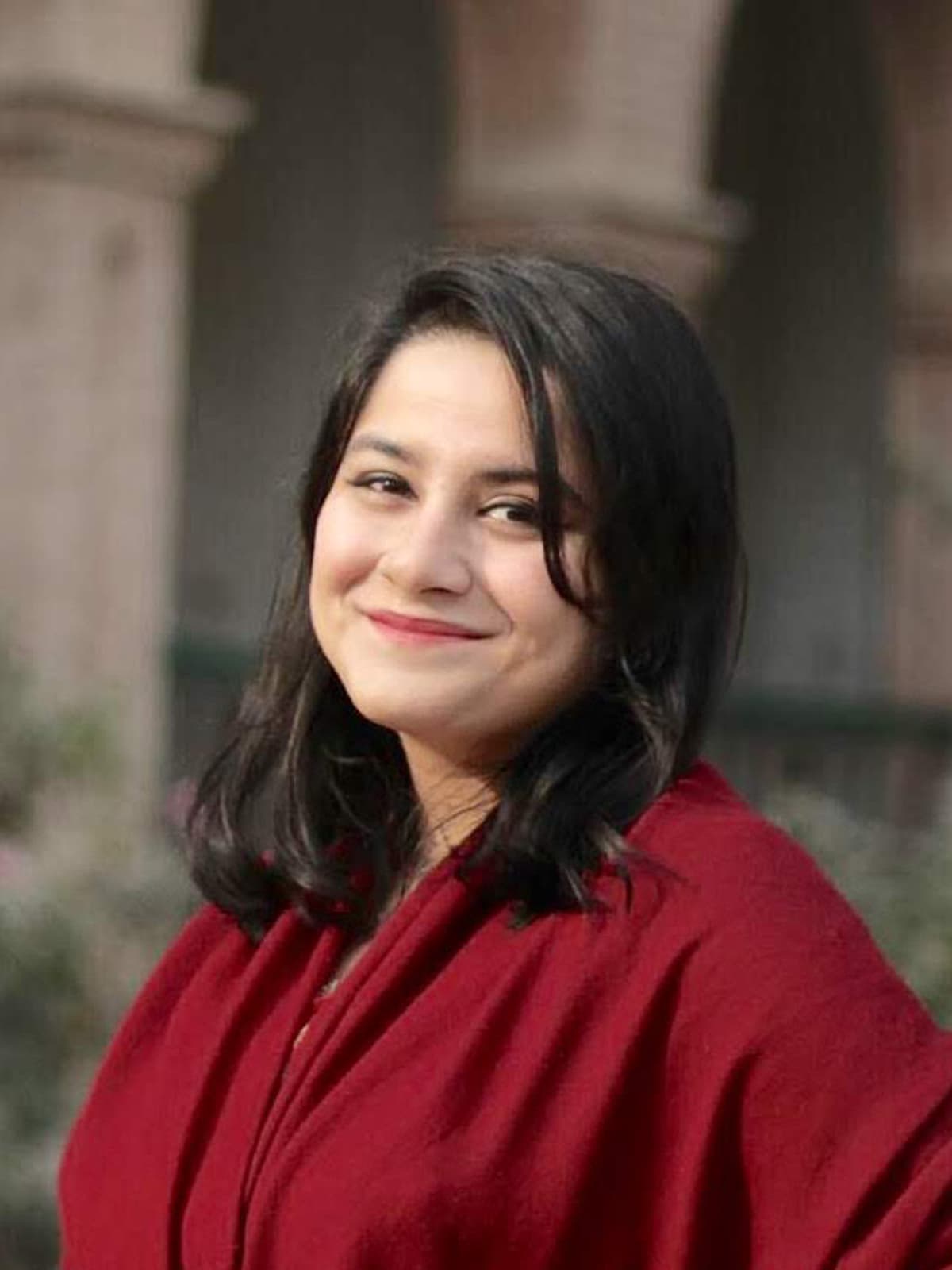
A 24-year-old based in Peshawar; co-founder of Daastan.com, an initiative to promote literary activities
A1. I had just moved out of an all-girls school and shifted to an all-girls college which meant I had more freedom than before to go out, explore and learn about the world. It was during this time that I often saw catcalling, stalking and a lack of opportunities for girls. My rebellion against such behaviour started when I began writing small poems and stories about hypocrisy in our society. Later on, after I had more exposure towards social problems, I came to realise that these had been rooted in our history and I had to fight against them come what may.
A2.I believe social media has helped us come a long way. We have started to speak about personal autonomy, class differences, a more transparent political presentation, equal wages and much more. While feminism in Zia’s era was political, today it is becoming intersectional due to its development both globally and nationally. We have more freedom of speech than the past and the moment is, slowly and gradually, becoming inclusive. It is addressing the rights of all genders.
A3. Life is difficult for feminists in our society. One of the major reasons for this is a lack of awareness in our society. We do not see feminism as a movement that ensures equality but one that will provoke conflict among genders. At Daastan.com, we frequently face backlash for bringing marginalised voices forward. We faced massive threats when we published an e-zine called Outcast. We had to seek legal support against those threats.
At the Peshawar Book Club, we faced heated arguments for presenting a selection of books written by feminists. Those books were disliked. The society had a negative perception about them regardless of their brilliance. Canadian novelist Margaret Atwood’s book, The Handmaid’s Tale, made us face the wrath of some members of the club. They called feminists as delusional for believing that women are oppressed
A4. Aurat March is a brilliant initiative. It should be followed by monthly dialogues, workshops as well as political movements. We need more women in the legislature who are responsive to our demands for gender equality. We need to rally support for all those women who came forward to raise their voices during the march so that they continue doing so all year around. This can help us in building a curriculum for consciousness raising and awareness on a deeply rooted misogyny and its implications.
A5. Pakistan has a pluralistic but a highly stratified society. The problems of every class, caste, ethnicity and gender vary and cannot be seen through a single lens. A more diverse representation of women is needed in the feminist movement to have a better understanding of their problems. We cannot only be the voice of young upper middle class women. We need to expand our activism. Aurat March 2019 has improved on the previous edition of the march by integrating voices of women from all ethnicities, religions and classes but we still have a long way to go. Such an integration can play an enormous role in the growth of the movement and eventually in its impact.

Minahil Baloch
A 19-year-old aspiring film-maker born in Khairpur but studying in Karachi
A1. Two years ago, I did not take much interest in feminist activism or feminism in general but, with time, I realised how I had been conditioned into thinking that it was okay for the society to work in a certain way. When I unlearned this and learnt about how a patriarchal system works, I could see how relevant activism was to my life. I started analysing my life and noticed how a patriarchal system has normalised sexist behaviour in our daily lives. What I heard a lot was: tum baiti naheen ho, baita ho hamara (you are not our daughter but our son). According to parents, this is a very progressive thing to say but it is not. It is not their fault though. They have been conditioned into thinking that way.
The other reason why my interest increased in feminism is that I want to reclaim the freedom Baloch woman have enjoyed historically. There is this stereotypical perception that Baloch women are not independent and free but this is not true. If we see historically, Baloch women have always been free women.
A2. We have evolved a lot [since Zia’s time]. We have become clearer about the problems we face in a typically patriarchal Pakistani society. Feminists under the Zia regime were fighting a battle against the man himself but the contemporary feminist movement is fighting against the mindset that he has left behind. This mindset is now more intense and extreme than what feminists faced then.
Also, opportunities for online activism were not available back then but these are a [big thing] now, making it easier for feminists to educate themselves through the internet — something that itself comes with a lot of cyber bullying, harassment, rape/death threats. The contemporary feminists have to fight online harassment as well along with harassment on the ground.
A3. Why people around us have issues with feminism and feminists is because they have been conditioned into believing that feminism is a ‘western’ concept. We need to understand their mindset in order to change them. That in itself is a fight and a half, and requires a lot of emotional labour to fight. So, yes, there are some challenges but if we understand that people are conditioned to see feminists in a particular way and that we are here to change that mindset, that will make things a lot easier.
A4. As a film student, I feel like films have a huge impact on the minds of their audiences. More films, therefore, should be made that revolve around women’s issues. This will help film audiences change their perspectives on these issues. At the very least, this will help them have a rethink.
A5. A feminist movement cannot succeed without including a struggle against class, caste, ethnicity and religion because these are the ingredients of a typical patriarchal system. For example, religion is often rubbed into our face when we put forward a valid feminism argument. People belonging to the elite class are privileged enough to not have the same problems as those belonging to the middle class have, so I have seen them invalidate the problems of the lower classes. Feminism cannot work without bringing these issues into its framework.

Sana Lokhandwala
A 27-year-old based in Karachi; co-founder of HER Pakistan, a charity working on improving menstrual hygiene awareness
A1. I have always been aware of the strict gender roles and gender bias around me but I have been more a passive feminist than being a ‘feminist activist’. I was never out there fighting for it like a lot of other strong women but I was doing my part quietly in my own way. It was only when HER Pakistan came into being that I realised that there is a need to actively fight against the oppression. Women in Pakistan do not even have the right to make decisions about their own bodies and health. They have to rely on men in their households to procure something as basic as a sanitary pad. Menstruation, which is a natural process, is termed ‘dirty’ and ‘disgusting’ only because it is about a woman’s body.
A2. Feminism has been very much a part of Pakistan since the independence. Fatima Jinnah and Begum Ra’ana Liaquat Ali Khan struggled for the rights of women in the earliest times. Zia’s era was more challenging. Parts of Hudood Ordinances that pertain to rape and adultery and the impact these had on female rape victims forced feminists of the time to step up and protest for their rights. Present-day feminism, however, is more pluralistic and accepting in terms of gender, sexuality, race, class and religion than its past editions. But, although a number of laws on women’s empowerment, sexual harassment at the workplace, honour killings and even domestic violence have been passed in recent times, Pakistani feminists still need to continue to protest over violence against women, raise awareness about women’s education, work for political, legal and health rights of women and struggle for more women-friendly laws.
A3. The negativity around feminism in Pakistan is frustrating. It takes an emotional toll on everyone who is struggling to create a better society for women, but good things do not come easy. It is a fight worth fighting. Personally, negativity and backlash just give me more strength to keep going. When people tell me there is no need to talk about menstruation in public, I go on and educate 100 more people about it.
A4. Although Aurat March is a relatively new phenomenon in Pakistan, women have always done one thing or the other to get their voices heard. Be it through art or dance or poetry or social media, Pakistani women have never shied away from standing up for their rights. Although a lot of women are doing amazing work in order to create a more balanced Pakistan, I believe all activists should join forces every now and then to create a powerful statement — just like Aurat March did.
A5. Feminism is not only a movement, it is also a way of life. It cannot work in isolation. You cannot solve the problem of gender bias without solving the problems of class, caste, ethnicity and religion. Women of colour and those who come from underprivileged backgrounds have always been exploited. Gender equality is for everyone regardless of their class and race.

Sadia Baloch
A 19-year-old studying at the University of Balochistan, Quetta
A1. I was raised in a society where women are used to being manipulated, exploited and violated. They are considered the property of males in their families, irrespective of which class, ethnicity or religious group they come from. The owner of the property has the right to decide its fate. This concept of men owning women has turned women into a commodity which can be exchanged, bought and sold. In a tribal society like Balochistan’s, a woman’s shame is the shame of her husband; her honour is her man’s honour. A man can do anything and go anywhere but a woman’s leg is broken if she breaks the society’s laws. She is not free to go where she wants. A man can be bad and no one will say anything but everyone knows when a woman is bad. This is what urged me to fight against patriarchy in Balochistan.
A2. There was a time when we had WAF which encouraged feminist activists of a whole generation. On the contrary, in contemporary times, one can see movements in Islamabad, Lahore and Karachi which have a bit of elitist notions of freedom and equality. The sufferings of being a feminist, especially in Balochistan, are still beyond [the pale of the current movement]. There is a need to expose different facets of oppression which women of different classes and oppressed nationalities face on daily basis. Still, I see an umbrella of sisterhood as the only way out.
A3. Women’s freedom is often considered as being against the teachings of Islam as well as against many cultural norms. This is especially so when one is fighting against strict patriarchal norms in a tribal society. The mullahs, the deciders of the fate of women and the self-proclaimed guardians of Islam, have lynched women in order to save Islam. Religion and patriarchy are the toughest enemies of women. They both place women in a subordinate position, allowing men to control their access to material resources as well as to their own sexuality. So, definitely, fighting against such suppression is tough and there are challenges.
A4. To make ourselves heard, we must make noise first. Aurat March was that noise. Now our voices can be heard even by the deaf. No matter what platform we use, everyone will have to pay heed. We should, however, realise that a disciplined struggle under an organisational structure has always proven effective so women should start participating in political activities by joining political parties at every level. Instead of joining mainstream and elite-ruled parties, however, they should join leftist student organisations or they should join women-only groups where they can meet like-minded women with common aims. Women who might find it hard to become a part of political organisations should never forget that they can make a difference even individually. One daring girl can change what thousands might fail to change. So, women should start standing up for themselves at their offices, schools, colleges and even at public places that they usually avoid going to.
Women activists should run awareness campaigns. Women who are political activists and who are knowledgeable should teach other women that there is nothing wrong with them but it is the society and its norms that make them think so, and that they need to join hands and start breaking norms. They should continue doing so until breaking norms becomes a new norm.
A5. As long as women do not realise the need for a social revolution, including for the demolition of patriarchal and tribal tyranny, they will not succeed. For feminist activism in Balochistan to succeed, it is a necessary requirement to end violence against women, to empower them, to break the cycle of their oppression and exploitation. Male members of the society must take a step back from their patriarchal mindset in order to give women the space to enjoy their freedom and have agency in their own lives. Feminist activism both has a place and a role to play in national struggles in political and cultural spheres.

Yusra Amjad
A 25-year-old poet and stand-up comedian based in Lahore
A1. I grew up with an abusive father so I have witnessed the ugliness of patriarchy since childhood. I became more and more confident about owning the label of feminist as I grew older. When I was a teenager, it was much less acceptable to call oneself a feminist than it is now but I have always been staunchly passionate about standing up for, and having solidarity with, other women. I grew up in very women-centric spaces and I found them positive and nurturing for me. In college, I started to write about harassment and the patriarchal elements of institutionalised religion. Then I met Sadia Khatri who got me involved with Girls at Dhabas, a collective focused on reclaiming public spaces for women. I started to become more organised in my activism through that. Since then I have also helped organise Aurat March in Lahore both in 2018 and 2019. Activism is important to me because I want to play a part in levelling the playing field for women in whatever way I can. I am incredibly privileged in multiple ways as well and I consider it my responsibility to use my privilege for the benefit of the marginalised communities.
A2. Feminist activism was a very ‘niche’ thing in the 1980s, pursued by committed individuals. It was not the common talking point than it is today. In its own way, it was also a lot more dangerous back then. The focus back then was on challenging misogynist laws and legislation whereas the current wave of feminism is challenging [other] forms of misogyny — such as social attitudes, the policing of women’s bodies, their movement and their sexuality and social evils such as dowry culture. And, of course, feminist activism now has become a ubiquitous conversation because of the social media which was not the case before.
A3. I really think social media has made life dangerous for feminist activists (though, of course, it is also a great tool for activism). It is a new – and endlessly accessible – platform for violence against women. Think about it: if a dupatta burning protest had happened today, women would have been threatened not just by the state and the police but their social media profiles would have been targeted too. They would have faced a barrage of online rape threats. They would have had their faces photo-shopped onto pornographic images. This, of course, is not to say the challenges the previous generation of feminists faced were any less scary or daunting but, nowadays, the backlash does not end in the physical space. It continues in online spaces. Every feminist I know deals with the backlash in their own unique way. My preferred coping mechanism is wilfully ignoring many of the risks and consequences. Social media is also a democratic space for us to fight back. [Our detractors] can censor print and television media but they cannot, at least so far, stop us from putting up a Facebook status.
A4. Aurat March is aimed purely at women who are socially privileged like myself — who can challenge men in their drawing rooms, who can challenge men in their bedroom and who can challenge men at dinner parties. I am so tired of seeing privileged women sharing #MeToo posts and then inviting harassers to their events and parties just because the said harassers are wealthy, well connected and popular. I am tired of women sharing feminist memes and giggling while their husbands tell women-belong-in-the-kitchen jokes. Listen to working-class women. We are complicit in their oppression. Give them their rights, their minimum wage, their sick leave, their maternity leave. And speak up when someone abuses their servants.
A5. To quote [Dutch feminist writer] Flavia Dzodan, our feminism will be intersectional or it will be bullshit. In Pakistan, we especially have to consider our Sunni Muslim privilege. That being said, the most financially privileged men will use their faux concern over ‘class politics’ and ‘the proletariat’ to silence issues of gender politics. It is not for privileged men, however leftist they claim to be, to tell any woman how to address intersectionality. If it comes down to it, giving a platform to a privileged woman is still more subversive than giving a platform to a privileged man.

- Monthly DAWN Editorials
- Monthly Global Point
- Foreign Affairs Magazines
- The Economist Magazines
- Time Magazines
- Pakistan & India
- Pakistan & USA
- Pakistan & China
- Essay Books
- English Composition Books
- Pakistan Affairs
- Current Affairs
- General Science and Ability
- Islamic Studies
- Essays Books
- English Precis and Compositions Books
- Current Affairs Books
- Pakistan Affairs Books
- General Science and Ability Books
- Islamic Studies Books
- Download Optional Books
- Buy CSS Optional Books
- CSS Syllabus
- CSS Past Papers

- CSS Rules & Regulations
- Buy CSS PMS Books Online

- Empowering Women: The Impact of the Feminist Movement on Pakistan's Political and Social Landscape

Empowering Women: The Impact of the Feminist Movement on Pakistan’s Political and Social Landscape
- Title: Empowering Women: The Impact of the Feminist Movement on Pakistan’s Political and Social Landscape
- Compiled & Edited By: Faiza Zuhaib
- Subject: CSS Gender Studies
How to Order Online? Call or WhatsApp 03336042057
Description
Empowering Women: The Impact of the Feminist Movement on Pakistan’s Political and Social Landscape. Faiza Zuhaib has written a remarkable booklet.. She is an accomplished researcher and writer. This is published by The CSS Point. The book delves deep into the feminist movement in Pakistan and examines its impact on the country’s political and social landscape.
The author has divided the book into several sections that offer a comprehensive understanding of the feminist movement in Pakistan. To begin with, it starts by examining the historical context in which the feminist movement emerged in Pakistan and traces its evolution over time. Additionally, the author provides a detailed analysis of the various factors that have contributed to the growth and development of the feminist movement in the country.
Buy CSS Gender Studies Books Online as Cash on Delivery
One of the key strengths of the book is its focus on the impact of the feminist movement on Pakistan. The author provides a detailed account of the various political and social changes. That have occurred as a result of the feminist movement’s efforts. The book examines how the feminist movement has challenged patriarchal structures and norms, and how it has empowered women in Pakistan to take on leadership roles in various spheres of life.
Moreover, the book also examines the challenges and obstacles that the feminist movement has faced in Pakistan. It discusses the various resistance and opposition that the movement has encountered, and how it has responded to these challenges. The book also looks at the future of the feminist movement in Pakistan. Also, the various opportunities and challenges that lie ahead.
In conclusion, Empowering Women: The Impact of the Feminist Movement on Pakistan’s Political and Social Landscape. This is an insightful and thought-provoking book that provides a comprehensive understanding of the feminist movement in Pakistan. The author’s meticulous research, combined with her lucid writing style, makes this book an essential read for anyone interested in women’s rights and gender equality in Pakistan.
Related products

All Important Units

A Communicative Grammar of English By Geoffrey Leech Jan Svartvik
Direct and indirect solved, please review.
Feminist Movements in Pakistan CSS – The 2 Major Groups
The article discusses “Feminist movements in Pakistan. Slideshare. Feminism and feminist writers. Women rights movement in Pakistan. Feminist movements in Pakistan.”
Feminist Movements in Pakistan
The worldwide feminist activism has its influence on Pakistan and its society too. In the country feminists today have more freedom and liberty than ever before. They are free to demonstrate and demand more rights and have the power to influence national planning and policies.
What Type Of Feminism Do We Need in Pakistan?
Islamic Feminism in Pakistan
Broadly speaking, there are two major categories of feminist movements that are at work in Pakistan today. One group of feminist is that which believes in demanding more rights and liberty for women within the limits of Islamic teachings. The group headed by Asma Barlas, Riffat Hassan and Amina Wadood basically follows the agenda of Modern Islamic feminism. They seek women’s rights by redefining Islamic views and focusing on the female centric laws of Islam. This form of feminism largely appeals the lower, middle and the upper middle class of society which looks to religion for answers.
Women Rights Issue in Pakistan
Western Feminist Movement in Pakistan
The other group of feminists which follows western feminism to secure more rights and liberty for women in society is headed by Fouzia Saeed and Shahnaz Rouse. They believed that feminism is an extension of basic human rights regardless of any religious connotations. Their feminism is therefore known as secular feminism.
Status Of Women’s And Gender Studies In Pakistan
In Pakistan feminist saw their first success in 1960’s when Muslim Family Laws Ordinance (MFLO) was passed that was pushed by the All Pakistan Women’s Association (APWA). Muslim Family Laws Ordinance put some restrictions on men’s arbitrary right of divorce. Similarly it also gave women some rights regarding child custody and maintenance.
My Body My Choice Pakistan
Feminist movements in Pakistan however gained real momentum in 1980’s especially during Zia’s regime when Hudood Ordinance was passed. In urban areas of Pakistan all feminist movements of 1980’s were headed by Women’s Action Forum (WAF) established in 1981.
Reasons Responsible For Gender Inequality In Pakistan
During Benazir Bhuttos’s two terms government in Pakistan, feminism in the country gained new roots. Non Governmental Organizations (NGOs) and feminist groups were given more power and liberty to work for the empowerment, development and advancement of women in the country.
Western Versus Islamic Feminism
During Nawaz government of 1997, feminist movements lose some grounds which were soon recovered during Pervez Musharaf regime in the country. Pervez Mushraf government encouraged women’s participation in sports, media, politics and other social and political activities.
Gender Studies MCQs Quiz Online
The past three Aurat Marches (2020, 2019 and 2018) have made feminist movements in Pakistan more controversial than ever before. Their slogan and placards have not only received stern criticism countrywide but also has put a drift in feminist group of Pakistan. For better future and success of feminist movements in Pakistan, it is necessary that all feminist organizations should work by keeping in mind the socio-culture pattern of the country.
Related Posts
Women Universities As Agents Of Change CSS Essay
Masculinities And Feminism – CSS Gender Studies
Nairobi Women’s Conference 1985 CSS
What Type Of Feminism Do We Need In Pakistan?
About the author.
Askedon helps aspirants in their preparation for CSS, PMS, PCS and one paper MCQs based tests. We have syllabus wise complete notes of Current Affairs, Pakistan Affairs, Islamiat, Essay, Gender Studies and many other compulsory and optional subjects of CSS, PMS and PCS. The blog is owned and managed primarily by Ataulhaq Yusufzai. For more details please visit About US and Privacy Policy page.
Leave a Comment Cancel Reply
Jahangir's World Times First Comprehensive Magazine for students/teachers of competitive exams and general readers as well.
- CSS Result 2020
- Attention CSS 2020 Aspirants! CSS 2018 Examiners Report Also, read in-depth analysis on CSS 2019 Exam by Team JWT
- CE-2019- Written Part Result
- Coronavirus (COVID-19) Latest Update
- India's Bloody Borders | CSS Current Affairs | A Fortnightly Glance | Ahmed Ali Naqvi | World Times
- World Times April 2020 Urdu Editon in PDF
- World Times April 2020 English Edition in PDF
- World Times May 2020 Urdu Edition
- Guss Paper PMS -2020 of URDU & ISLAMIAT
- 4th JWT Essay Competition
CSS 2017 Solved Paper (Essay Outline – FEMINISM IS NOT ONLY A THIRD WORLD ISSUE)
March 10, 2017 CSS Special , March 2017 Leave a comment
1. Introduction
2. Meaning and Scope of the Term ‘Third World’
3. What is Feminism?
4. Feminism: A Global Issue or Merely a Third World Issue?
5. An Overview of Women Inequality in the Developed Nations of the World
I. Political inequalities
a. Number of women as Heads of State b. Women’s participation in electoral processes c. Fundamental rights
II. Economic inequalities
a. Number of women in the list of richest persons of the world b. Difference between men and women in per-hour income c. Women’s economic dependence on men d. Women’s count in government jobs
III. Social inequalities
a. Parents desire to have a male rather than a female one b. Ratio of rapes on women c. Cases of physical and mental torture d. Use of women as a tool for sexual pleasure of men
IV. Administrative inequalities
a. Availability of conducive environment at workplaces b. Implementation of laws 6. Causes of Women’s Deprivation across the Globe a. Historical reasons b. Male psyche of dominance c. Women’s psychological factors d. Biological reasons e. Men as most of the legislators f. Poor role of education sector g. Ineffective role of media h. Men’s role in wars and in the face of natural calamities
7. Impacts of Women’s Deprivation
8. An Overview of the Feminist Movements across the Globe
a. Activities from the platform of the United Nations b. Efforts made by NGOs c. Struggle at the level of states d. Role of media
9. Recommendations for Ameliorating the Situation
a. UN to lead from the front b. Proper allocation of resources c. Sharply-focused role of educational institutions d. Mature and target-oriented role of media e. Enactment of stringent laws f. Spread of awareness through media campaigns g. Effective role of educational institutions
10. Conclusion
Related Articles
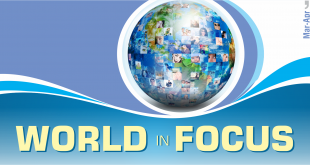
World in Focus ( MAR-APR 2021) National & International
May 25, 2021
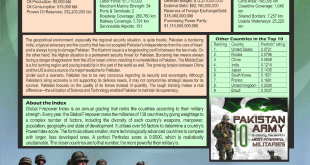
Pakistan Military Strength
May 7, 2021

Zara Naeem: Another Shining Star of Pakistan
April 29, 2021
Leave a Reply Cancel reply
Your email address will not be published. Required fields are marked *
Save my name, email, and website in this browser for the next time I comment.

Essay on “Democracy in Pakistan” for CSS, and PMS
- January 24, 2022
- Essay for CSS PMS and Judiciary Exam
This is an Essay on “Democracy in Pakistan” for CSS, PMS, and Judiciary Examinations. Democracy is a form of government in which the people have the authority to deliberate and decide legislation, or to choose governing officials to do so.” Democracy is a system of government in which power is vested in the people and exercised by them directly or through freely elected representatives. As Democracy is a very popular topic so, here is a complete Essay on “Democracy in Pakistan” for CSS, PMS, and judiciary examinations.
What is democracy? Essentials of democracy Democracy in Pakistan
A brief history
- The early period from 1947-58
- Period of General Ayub and General Zia
- Political turmoil and General Pervaiz Musharraf
Causes of failure of democracy in Pakistan
- Delayed Framing of the Constitution
- Leadership Crisis
- Lack of education
- No independence of the judiciary
- Weak political parties and their infighting
- Delayed elections and rigging
- Corruption and nepotism
- Quasi-Federalism and Conflict between Eastern and Western Wings
- Terrorism and extremism
Pakistani Democracy Vs. Western Democracy
Suggestions
- Effective accountability of the politicians
- Reforming judiciary
- Abolish feudalism
- Eliminate corruption
- Two parties system on the pattern of the USA, UK
- Amendment in the constitution
- Fair and free election
- Increase the education budget to educate people
- Uninterrupted democratic process
- Strengthening the institutions
Essay on “Democracy in Pakistan” for CSS, PMS, and Judiciary Examinations
“You have to stand guard over the development and maintenance of Islamic democracy, Islamic social justice, and the equality of manhood in your own native soil.” -Muhammad Ali Jinnah,
To acquire immunity to eloquence is of the utmost importance to the citizens of a democracy. – Bertrand Russell
Democracy is a form of government in which all citizens have an equal say in the decisions that affect their lives. Ideally, this includes equal (and more or less direct) participation in the proposal, development, and passage of legislation into law. It can also encompass social, economic, and cultural conditions that enable the free and equal practice of political self-determination. While there is no specific, universally accepted definition of ‘democracy’, equality and freedom have both been identified as important characteristics of democracy since ancient times. These principles are reflected in all citizens being equal before the law and having equal access to legislative processes.
For example, in a representative democracy, every vote has equal weight, no unreasonable restrictions can apply to anyone seeking to become a representative, and the freedom of its citizens is secured by legitimized rights and liberties which are generally protected by a constitution.
Many people use the term “democracy” as shorthand for liberal democracy, which may include elements such as political pluralism; equality before the Jaw; the right to petition elected officials for redress of grievances; due process; civil liberties; human rights ; and elements of civil society outside the government. In the United States, separation of powers is often cited as a central attribute, but in other countries, such as the United Kingdom, the dominant principle is that of parliamentary sovereignty (though in practice judicial independence is generally maintained).
In other cases, “democracy” is used to mean direct democracy. Though the term “democracy” is typically used in the context of a political state, the principles are applicable to private organizations and other groups as well.
Democracy in Pakistan
Democracy in its true spirit has never been allowed to take root in Pakistan. Since its independence in 1947, a military-bureaucratic establishment has always governed the country. Army generals usurp power at their own convenience and quit only when they are forced to quit by mass political movements or by sudden unexpected death. When forced by external or internal pressures, democracy is given a chance but in reality, a group of army generals keeps controlling the decision-making.
This direct or indirect military influence is the greatest impediment to the evolution of a stable governing system in Pakistan. Besides, the army is not solely responsible for this mass but it is our inefficient politicians who provide an opportunity for to army to take over.
A brief history of Democracy in Pakistan
Recalling the last 62 years of Pakistan, democracy is found only as an interval before the next military general comes to the scene. The future of democracy was doomed from the start when Liaquat Ali Khan, the first elected Prime Minister, was shot at a public gathering. Nobody knows to this day who did it and why. From now on, the balance of power was to shift in the favor of the military. A comparison tells us how this shift came up. From 1951-57 India had one Prime Minister and several army chiefs while during the same period Pakistan had one army chief and several Prime ministers.
The same army chief, the Sandhurst-trained general, Ayub Khan was to announce the first martial law in the country in 1958 and then a series of military rules were to follow.
General Ayub Khan could not withstand a popular national movement against him and transferred power to General Yahya Khan in March 1969. Under him, Pakistan lost its half which is now Bangladesh. Power was then transferred to Zulfikar Ali Bhutto as the first civilian martial law administrator. Bhutto pursued an independent policy, which was against what generals and the US wanted, and he had to pay with his life.
Charged for compliance in murder, Bhutto was hanged by the next martial law administrator, General Zia ul Haq. The hanging of an elected Prime Minister was shocking news to the world and Pakistan was to have the effects years later. The general died in a mysterious plane crash.
Then came a ten years gap of experimentation with democracy and every two years each elected government was ousted by the special discretionary powers of the president . An end to this ten-year spell came with a new general coming to power ousting the incumbent elected government of Mian Nawaz Sharif. This time the Prime Minister was charged with conspiring against the state and was ousted from the country.
The immediate and foremost requirement of the Constituent Assembly was to frame a democratic constitution for the country. The constitution had to lay down the form of government, and the role of the judiciary, military, and bureaucracy. It had to decide the basic issues about provincial autonomy, religion and the state, the joint or separate electorate, representation of minorities and women in assemblies, fundamental rights, and civil liberties.
The debate over the representation of eastern and western wings of the country and religion versus secularism were the two main hindrances in the way of framing the constitution. As against India, which was able to frame the constitution of the country within two years of independence in 1949, Pakistan took nine years to finalize the constitution in 1956, which did not work for more than two years and was abrogated.
The second constitution was framed by a military ruler General Ayub in 1962 which could last as long as he was in power. Finally, it was after the separation of East Pakistan and a lapse of more than a quarter of a century (1947-1973) that the elected representatives of the people under the leadership of Prime Minister Zulfiqar Ali Bhutto framed a consensus constitution envisaging a federal, democratic structure for the country and a parliamentary form of government.
This constitution has survived in spite of the breakdown of democracy twice in 1978 and 1999 and hopefully has come to stay. But the delay in framing the constitution harmed the growth of political democracy, as it allowed the authoritarian rule of the Governor-General to continue for seven long years (1947-56), which set this inglorious tradition in the country.
The second obstacle in the way of democracy is the culture of feudalism. Democracy cannot develop in the suffocating atmosphere of feudalism. The history of feudalism in the subcontinent is not very old. It owes its origin to the war of independence in 1857 when different people were awarded large swathes of land by the British government because of their treacherous cooperation with the latter. Those feudal families joined Muslim League when they saw that Pakistan was going to be a reality and inherited power after the death of the founding father. Feudalism has now become a severe migraine for the nation. Democracy and feudalism are incompatible.
Change of faces at the wheel has not served any purpose. Even these feudal lords occupy more than 70 % of our land leaving the people to lead a miserable life. They are senators, ministers, MPAs, MNAs, and also the owners of major industries in Pakistan. There is a crying need to bring some structural changes in order to strengthen the political system. Industrialization has also played a significant role in the strengthening of democracy across the world. Great Britain is considered the mother of democracies on this planet.
Some analysts are of the view that democracy has its origin in the Magna Carta, Bill of Rights and Habeas Corpus, etc. But even after these developments very mighty rulers have ruled Great Britain. In fact, the invention of the steam engine led to the industrial revolution which eradicated the roots of feudalism and the evil of absolute monarchy. All this resulted in the development of democracy. In Pakistan, there is everything from adult franchises to the separation of powers between the three organs of government but no plan for that kind of industrial revolution.
Quaid-i-Azam Muhammad Ali Jinnah, the father of the nation and the first Governor-General, died just one year after the establishment of Pakistan on September 11, 1948, and his right-hand lieutenant Liaquat Ali Khan, who was the first Prime Minister, was assassinated on October 16, 1951. About the capability of other leaders of the Pakistan Muslim League (PML), the party which had successfully piloted the movement for Pakistan, Jinnah had ruefully remarked that “he had false coins in his pocket”.
Consequently, several ministers appointed initially were not politicians and did not have a seat in the Assembly. Similarly, in 1954, there were several members of the Prime Minister’s cabinet without a seat in Parliament. “The cabinet and other high political appointments reflected a paucity of talent among the politicians.”
It is indeed a sad commentary on the elected members of the first Legislature and Constituent Assembly of Pakistan that they could not find a suitable head of state from among their own ranks. Most of them came from the civil bureaucracy or the military. The civil-military bureaucracy did not have a favorable opinion about the competence of political leaders and often took decisions without consulting them. This adversely affected their political training, development, and growth.
The inability to control the Anti-Ahmadiya Movement in Punjab in 1953 was blamed on inept political leadership. This religious movement was spearheaded by the religious Ahrar Party which had opposed the establishment of Pakistan and now wanted again to come into the limelight. They were supported by other religious parties, i.e., Jamaat-i-Islami, JamiatuiUlema-i-Pakistan, and JamiatulUlerna-i-Islam. The movement was exploited by politicians in their own political interests.
But the civil-military bureaucracy was against the religious parties dominating the power structure either in the provinces or the center. To rescue the city of Lahore where Ahmadis were in a “virtual state of siege” and their properties were being “burned or looted”, General Azam Khan, the Area Commander, was ordered by the Defense Secretary, to impose martial law in Lahore. It was met with the general approval of the people.
It was demonstrated that the civil-military bureaucracy “would not let politicians or religious ideologues lead the country to anarchy”. This also laid down the foundations of the supremacy of the military and orchestrated the initial rehearsal for the recurring imposition of Martial Law in the country and its acceptance by the people.
Lack of education has remained an important impediment to the democratization of countries. This is not just a problem for Pakistan but of the whole Third world. Laski, a famous political thinker said that education is the backbone of democracy. Democracy is a system of governance in which the people choose their representatives through elections. Their strength lies in the ballot box. If people are not vigilant and educated enough to make a better choice, democracy will not flourish in that country.
This is the main reason that even in the countries apparently practicing democracy but the majority of uneducated people are among the under-developed nations. Masses in Pakistan have not found ways of compelling their rulers to be mindful of their duty. Their failures in this regard result from insufficiency of experience and training in operating modem democratic politics. Democracy puts the highest premium on constitutionalism, which is possible only with the predominant majority of people. Pakistan’s democracy can neither improve nor become viable as long as the majority of the population remains uneducated.
Judiciary is one of the most important pillars of a state and in a country where the judiciary is not imparting justice , democracy cannot develop. During the Second World War, someone asked British Prime Minister Winston Churchill whether the British would win the war. The Prime Minister laughed and replied that if the British courts were dispensing justice, no one would trounce the United Kingdom. In Pakistan since 1954 judiciary has remained docile to the wishes of the executive. As Shelley says, “If the winter comes; can spring be far behind”.
In fact, since its birth, Pakistan has been governed by bureaucratic, military, and political elites. The bureaucratic elite generally became more assertive, steadily increasing their power at the expense of the political elite. Ayub’s term of office (1958-69) was the golden era for the bureaucracy, which exercised its powers, unbridled by any political interference. The weakness of political elites can be demonstrated by the fact that during seven years from 1951 to 1958, as many as seven Prime Ministers had been changed.
From 1988 to 1999, four democratically elected governments were replaced on charges of corruption, inefficiency, security risk, etc. The civil-military bureaucracy has dominated governance owing to the inherent weakness of the political parties and their incompetent leadership, resulting in the derailment of democracy thrice in the history of Pakistan, i.e., in 1958, 1977, and 1999.
Pakistan was not created as a theocracy but as a place where an economically marginalized minority could operate a democracy independently. It was to save the people from religious discrimination and domination by an overwhelming religious majority. Moreover, it emerged as a territorial state in the Muslim majority areas of the subcontinent. But the religious and secular groups soon started making conflicting demands while formulating the constitution of Pakistan.
The speech of Mr. Jinnah on August 11, 1947, addressed to the first legislative and constituent assembly of Pakistan, advocated political pluralism and declared that the “religion or caste or creed has nothing to do with the business of the State”. This has not adhered to the Objectives Resolution passed by the Constituent Assembly in 1949, which pacified the demands of Muslim religious parties and elements but was not supported by religious minorities.
The compromise solution attempted to balance the values and the spirit of Islam with the requirements of secularism. Due to a lack of competent and visionary political leadership , and the fact that Muslims constituted 98 percent of the population, the conservative religious leaders, partly due to their conviction and partly owing to their parochial interests, advocated and preached the establishment of a religiopolitical system based on Al-Quran and Sunnah.
They were skeptical of the politico-social development of modem times and western political institutions and forms of government. Their dogmatic theology clashed with the democratic culture envisioned by the founding fathers. Another adverse impact of the adoption of religion as a guiding principle in the constitution, was the promotion of religious sectarianism, especially between the two major sects inhabiting Pakistan, i.e., Sunnis and Shi’as. Some sections of these sects, instead of peaceful negotiations to overcome their differences, often resort to violence, which is against the spirit of both Islam and democracy. These rivalries fostered reliance on the security forces for the maintenance of law and order, which eroded the hold of democratic institutions in governance.
For any healthy constitutional and political system to function smoothly, strong and well-entrenched political parties are essential. Unfortunately, political parties in Pakistan have failed to develop into strong vehicles of national political will. The main responsibility for safeguarding democracy in a country falls on political parties. Pakistan, since its inception, was lacking well-organized and well-established political parties that could carry the representative system of governance forward.
The All-India Muslim League, which had piloted the movement of Pakistan from 1940 to 47, was not a well-organized political party, but it was primarily a movement. Leading a movement and organizing a political party are two different things. Most of its leaders belonged to areas that became part of the Indian Union and their majority did not come to Pakistan. Those who were in Pakistan, barring a few exceptions, belonged to feudal and landowning classes that in their nature were in conflict with the democratic dispensation. In fact “the leadership of the Pakistan movement had few roots in the land that became Pakistan.”
Their incompetence and constant wrangling for power in the initial nine years (1947-1956) were also responsible for the delay in constitution-making. Instead of cooperation and mutual accommodation, there was ceaseless infighting. For instance, as early as 1953, a clash between the leadership of Punjab and the central government led to intense communal riots and the imposition of Martial Law in Lahore, the provincial capital. Even as late as the decade 1988-99 of civil supremacy, the fight between the PML and the PPP led to the repeated dissolution of national and provincial assemblies and the dismissal of prime ministers and their cabinets. Finally, it ended with the military takeover in 1999.
The representative character of the civilian parliamentary government during the first decade of Pakistan’s existence was eroded because the country was governed under the Government of India Act of 1935. The purpose of the Act was “to make the appointed governor-general exert dominance over the elected prime minister.” The Act introduced a representative and centralized system of bureaucratic governance, which was an imperative requirement of the colonial government but not of democratic governance. The first general elections in the country should have been held in 1951, i.e., five years after the previous elections in 1946, but this could not happen till 1970.
The reasons for the delay were that the ruling elite, i.e., civil bureaucrats, migrant political leadership, and weak political parties, had few roots in the masses. As a consequence, general elections could not be held for 23 years (1947-1970) of the country’s initial history. On the expiry of the five years term of Prime Minister Zulfiqar Ali Bhutto (1972-1977), the second general elections on the basis of the adult franchise were held on March 7, 1977, which the PPP won with a vast majority.
The opposition parties alleged that the elections had been “rigged on a massive scale”. It has been commented: Elections in Pakistan had been rigged before, notably the presidential election in 1965 and the Provincial Assembly,y elections in the early 1950s, but rigging in these instances did not arouse the mass uprising as it did in 1977. The people of Pakistan were evidently not of the same mind now as they were in those earlier periods.
Corruption in bureaucracy and among political leaders poses a grave threat to good democratic governance. Quaid-i-Azam had termed corruption as “poison” and asked to put that down with an “iron hand”. Now that the international Reconciliation Ordinance, .vnich had withdrawn from prosecution any person “falsely involved for political reasons or through political victimization” between 1986 and 1999, has lapsed on November 28, 2009, the concerned individuals should get themselves cleared in a court of law in a transparent manner. The tribal nature of society in Pakistan is susceptible to nepotism. As an antidote, accountability and transparency are necessary. It is a challenge to the people to reject those leaders and political parties which indulge in corruption and nepotism.
One of the main bottlenecks in constitutional development in Pakistan was that its two wings were separated by about 1000 miles of hostile territory. The eastern wing consisted of one province but was more populous’ than the western wing which was much larger in the area and had as many as four provinces.
The western wing was not prepared to concede majority representation to the eastern wing in the parliament. After a confrontation of nine years between the two wings, the solution was evolved in the l956 constitution in the shape of parity of representation in a quasi-federal structure, neutralizing the majority of the eastern wing and paving the way for the manipulated domination of the western wing.
The domination of the western wing in governance led to an insurgency in the eastern wing which culminated in the separation and independence of Bangladesh in 1971. In post-1971 Pakistan, it came to be realized that ideological moorings alone could not easily overcome ethnic and economic differences. Yet the anti-ethnic attitude and anti-modem thinking prevalent in certain segments of society lean toward a unitary or quasi-federal state as against a true federation.
The latest threat is emanating from extremism and terrorism, especially in Khyber Pakhtunkhwa (KPK) and the Federally Administered Tribal Area (FATA). This is the spillover effect of the conflict in Afghanistan and is spreading to Pakistan. It is likely to continue as long as there is no peace and stability in that country. However, the military enjoying the support of the nation is successfully combating the extremists and terrorists under the supremacy of the civilian democratic government. It is hoped that the process would continue to its logical conclusion.
Due to the migration of literate Hindus and Sikhs to India, the literacy rate in Pakistan sharply declined. There was about 95 percent illiteracy in Pakistan in 1947, which acted as a hindrance to the growth of civil and democratic society. Feudalism and economic constraint did not permit any Pakistani government to launch a “crash course to expand literacy and grow higher standards.
The national economy has gone bankrupt and the national budget has become all foreign aid-dependent. Islam was the ideology that gave life to the Pakistan movement and later Pakistan itself but is now infested with sectarianism. Military policies gifted the country with cross-border terrorism and three million internally displaced people. Despite having the largest chunk of the national budget and being the seventh-largest army in the world, the Pakistan army is now in a mess of its own creation with little of its hard-earned prestige left to its credit.
The distorted face of the national system as a whole and the failure of the judiciary to guard the constitution of Pakistan are the major factors contributing to the change in the national mindset. The events of the last two years have clearly shown the preference of the people of Pakistan. The masses want democracy as a political and governing system for the country and a judiciary that guard the rights of the people. The military would be respected more if it stays in the barracks or guarded the national borders. The murder of Benazir Bhutto has taught new lessons.
If one compares Pakistani democracy with Western democracy it is said that for over 50 years, Pakistan remains occupied by three major interest groups in the time, opportunities, and resources of the besieged nation. The army, civil service, and the neo-colonial appointed landlords. If there was any rational tolerance scale, the Pakistani nation would certainly secure high marks on its standard of tolerance and survival under most unfavorable circumstances.
One of the pivotal factors supporting the notion of Western liberal democracies is that it provides opportunities for participation to ordinary citizens, right or wrong to culminate a sense of legitimacy for the election exercise and chose people of their interest to manage public affairs for a specified term. But the principles and standards for evil and good vary between the West and the Islamic world . Strange as is, in Pakistan, those who come to occupy the political offices never intend to quit the political power on their own except implication of military force through a coup.
Comparatively, on occasions, western democracies do” encourage educated and competent citizens to strive for their high ideas and ideals and come to the front stage and demonstrate their intentions and will power to seek the goal of ideal public service agendas. E.H. Carr defines the teaching-learning role of history and its value must not be ignored but preserved. Recall the Pakistani military dictators for the last forty-plus years, they each consumed a decade or more to relinquish power, that was not theirs in any systematic and logical context. Ayub Khan was ousted by Yahya Khan.
General Yahya with the complacency of Z.A. Bhutto surrendered East Pakistan to India (now Bangladesh) to share power with Bhutto but was put under house arrest as Bhutto assumed the power that did not belong to him based on the verdict of the people. Rightfully, it was Sheikh MujiburRehman, leader of the East Pakistan Awami League who should have been sworn in as the new leader of united Pakistan but it was treacherously undone by Yahya and Bhutto.
Both should have been tried as traitors in a court of law and punished. Not so, they were rewarded and Bhutto became the first civilian martial law administrator and self-made president of defeated Pakistan in December 1971. Dr.Ishtiaq Qureshi, editor of the Urdu Digest recorded for the history (“Sukoot-e-Dacca seyPurdhautha Hay”- Facts are revealed after the Dacca Surrender) that “in the quest for its survival Pakistan lost its destiny. Yahya and Mujib stabbed the body of Pakistan with one dagger and Bhutto will stab Pakistan with another dagger.”
Suggestions for Democracy in Pakistan
Fo1lowing are the suggestions for improving democracy in Pakistan:
An impartial system of accountability enhances public trust in the political system. It provides enormous strength to the democratic process. Moreover, it compels thousand who are charged with governance, to transparently discharge their official responsibilities. It ensures good governance and strengthens the political setup. In spite of facing innumerable challenges and showing unsatisfactory performance, Pakistanis have the capability to emerge as a democratic and progressive nation. Pakistan can road to democracy with the dedication, determination, commitment, courage, and patriotism of its political leaders.
Reforming the judiciary and incorporating Islamic laws can also soothe the deprived and poor masses who have been manipulated by the extremists due to the sheer negligence of the elected governments and ruling elite. This natura11y causes bitterness toward the present form of political setup.
Moving on, corruption and selfish attitudes are eating away at the institutional structure of our country and such practices never allow democracy to flourish. There is also a need for mature political leadership, which can think above its own gains. All this can only emerge after the formulation and implementation of strict accountability.
On the contrary, weak public institutions can be made strong and productive if the power and authority seep down. The example of many European countries is in front of us, where institutions are powerful and not politicians. Democracy in actuality can only be achieved through such measures.
Our constitution has been a source of constant controversy. Be it the realization of Islamic laws or the concentration of power in the head of the state, the constitution has served as a tool for the legitimization of alien changes and policies. Keeping the constitution intact has been long overdue. No one in power should be allowed to change it for prolongation of rule or appeasing any particular section. The Pakistani movement envisaged a democratic country with a federal structure.
In all Constitutions of Pakistan (1956, 1962, and 1973) the objectives of governance, in the words of Dr. Ainslie T. Embree, Professor Emeritus of Columbia University, are democracy, freedom, equality, tolerance, and social justice as enunciated by Islam, giving Muslims freedom to live their lives in accordance with the teachings of Islam, but with minorities having full freedom to profess their own religions.
Islam lays emphasis on the concept of Shura, i.e., consultation among people, which is the essence of democratic culture. Quaid-i-Azam, the founder of Pakistan had stated:
“We leamed democracy 1300 years ago. Democracy is i11 our blood. It is ill our marrows. Dilly centuries of adverse circumstances have made the circulation of that blood cold. It has got frozen, and our arteries are not functioning. But thank God, the blood is circulating again, thanks to the Muslim League’s efforts. It will be a People’s government. Culturally, ill the region of Pakistan, there is a concept of Jirga or Panchayat, i.e., an assembly of elders, to settle issues and disputes involving two or more two persons. This system has, been prevalent for ages, much before the advent of Islam. Thus, both religion and age-old tradition advocate the concept of consultation in decision-making through all assembly of people, which is the essence of democracy.”
During the period of British supremacy in the subcontinent, the practice of elections to assemblies (local, provincial and central) was introduced through various enactments. Finally, it was the Government of India Act 1935 under which the dominions of India and Pakistan functioned after independence till they framed their own constitutions. These enactments provided the groundwork for democratic governance. It may be of interest to note that even when the democratic rule was suspended by the armed forces, the military rulers always came with the promise to restore democratic governance .
For instance, in 1970, General Yahya Khan is credited with organizing the first-ever general elections in the country, which led to the establishment of democratic governments both in Bangladesh and Pakistan. Besides holding general elections in 2002 and 2007, General Musharraf’s introduction of a local government system introduced in 2001 is considered a “laudable model of governance” because of its principle that whatever can be done at the local level should not be done at a higher tier of governance.
The country is on the path to achieving full literacy and progress towards a higher standard of education in important disciplines. This is strengthening the civil society in ensuring the prevalence of democratic culture at the lower and higher level of governance. Secondly, the print and electronic media in Pakistan are vibrant and independent. A responsible media educates the masses, raises political consciousness, and thus promotes democratic values, norms, and culture. In addition, a number of non-governmental organizations (NGOs) are playing an active role in the field of education and contributing to the growth of a vibrant civil society and good governance.
The essential step seems to stop interruption in the democratic process so that we may see more than promos. To judge something, it has to be allowed a chance to survive and act. The elected government must be allowed to complete its tenure in any case. The military has to play a positive role here and not interfere in the smooth democratic process.
As mentioned before, a part of the population wants greater Islamic character in the Govt. and laws. If we analyze this demand, it will be apparent that the enforcement of Sharia is more related to lawmaking. Therefore, what is immediately required is a change in the judicial setup, which has been unable to gain the trust of people until recently. Encouraging steps have already started in this case, but much more needs to be done.
Sadly, the same corrupted pool of thought keeps appearing with new faces and the deceived masses blindly follow them. This is due to the absence of any kind of accountability. Political compromises enhance this trend. Such practices are against moral, democratic as well as Islamic principles and should end immediately.
Next, the all-powerful bureaucracy and feudal politicians should be stripped of their unwarranted authority. It has been a slow evil that has weakened the country like nothing else. They are elected for serving people not to control them. The criteria of merit; the right to freedom and equal progress for common people have become a joke due to such an autocratic setup.
The people of Pakistan in general lack political psyche and consciousness. This is largely due to poor literacy and a never-ending feudalistic rule over 60% of the country. Therefore, it is necessary to educate the masses and make them aware of their political rights. This can begin with greater political socialization by political parties and media.
In a democratic state, media has rightly been called the fourth pillar of the state. It can play a most important role in the present age for creating awareness. Our media has risen from the ashes like a phoenix. It, however, needs to play a positive constructive role and not become another compromised institution as well.
Finally, the strategic position and now the war against terror call forth unwanted attention from the international community sometimes. In the past, military rule has been covertly or openly supported by many countries to gain their own benefits in this region. The international powers must stop interfering in the democratic process and for that to happen, our own government, people and media need to be equally strong.
Politicians may have learned lessons from their past mistakes and are more mature politically. Consensus politics seem to be emerging in the country. In the past, the constant infighting amongst political parties had often led to interference and take-over by the armed forces.
Now a culture of reconciliation, accommodation, and dialogue is emerging. The ideological polarization is diminishing. After the general elections of February 2008, four major political parties, i.e., Pakistan Peoples Party (PPP), PML – Nawaz (PML-N), Awami National Party (ANP), Jamiat-ulUlema-i-Islam – Fazalur Rahman (JUI-Fl and MuttahidaQaumi Movement (MQM) have joined hands to govern the country and re-establish the supremacy of the Parliament in accordance with the Constitution of 1973.
Our youth constitute 30% of the society they are representative of a new generation. Their participation may ensure structural improvements in the national paradigm. It has been witnessed that during the Pakistan movement youth played a vital role in opinion formation and mass awareness and so is the time now. There is a need to guide our youth to take responsibility for our tomorrow.
To sum up, it is the political leadership that can ensure the permanence of democratic governance. The prospects are, however, not as dismal as sometimes portrayed. Already, the literacy rate in Pakistan has increased to more than fifty-five percent. Efforts are afoot to improve the standard of higher education. Economic growth and industrialization have given birth to a vocal urban society and middle class, which is growing. and gradually lessening the influence of the feudal class.
The vibrant electronic and print media is playing an effective role in constructive criticism of the government and in educating the masses. Elections are being held regularly, representative political leadership and political parties are getting stronger and a peaceful mode of transfer of power is becoming the norm. The bureaucracy (both civil and military), though still powerful, may retreat gradually and submit to the people’s power and will and concede to democratic governance. The democratic process is progressing and, hopefully, will be obstructed and derailed, as in the past.
Expected question about this Essay:
- Why has democracy failed in Pakistan?
- What practical measures do you suggest for strengthening democracy in Pakistan?
You may also like these:
- View other Relevant Essay Topics
- CSS Guide for Beginners for 2022
- PMS Guide: Syllabus, Paper Pattern Compulsory & Optional Subjects
- CSS Past Paper Subject Wise
- LLB Past Papers
I am interested in writing content for educational purpose.
Most relevant ▼
- Essay on “Innovations are Never-ending Headways” for CSS, PMS
- Essay on “Single National Curriculum Pave the Way for the Desired Ideological Integration in Pakistan Society” for CSS, PMS
- Essay on “Single National Curriculum Paving the Way for the desired ideological integration in Pakistan Society” for CSS, PMS
- Essay on “The cost of inaction is greater than the cost of action” for CSS, PMS
- Essay on “Inflation – A Result of Poor Economic Policies or a Part of Global Economic Woes” for CSS, PMS
- Essay on “Democracy without Justice is Tyranny” for CSS, PMS
- Essay on “Man is Born Free but Everywhere he is in Chains” for CSS, PMS
- Essay on “Power Corrupts: Absolute Power Corrupts Absolutely” for CSS and PMS
- Essay on the “Role of Social Media in the Modern World” for CSS and PMS
- Essay on “Terrorism and its Socioeconomic Implications” for CSS, and PMS

IMAGES
VIDEO
COMMENTS
feminist perspectives in order to create an overview of the history and current context of feminist ideas and actors in Asia. We are highly thankful to Dr. Rubina Saigol for authoring this paper, putting her tireless efforts, analyzing the situation of feminism in Pakistan and coming up with number of recommendations. We would also like to
Out line at the end of the essay! (Image source)When a group of hardline religious men attacked the peaceful women's demonstration of Aurat March in Islamabad in 2020, it was not the first time a feminist demonstration was physically attacked, and it likely would not be the last.
CSS Solved Gender Studies 2022 Past Paper | Discuss in detail the feminist movements in Pakistan. The following question of Gender Studies is solved by Ateeqa Atia Ul Musawar, the highest scorer in CSS Gender Studies.Moreover, the question is attempted on the same pattern, taught by Sir to his students, scoring the highest marks in compulsory subjects for years.
Arooj Nadeem, who scored the highest marks in PMS Punjab essay paper, has attempted the essay " The Controversial issues of feminism and the contemporary women's rights movements " on the given pattern, which Sir Syed Kazim Ali teaches his students. Sir Syed Kazim Ali has been Pakistan's top English writing and CSS, PMS essay and precis ...
Gender equality and the rise of feminism in Pakistan is a complicated matter, affected by various cultural, social, and political influences. Although progress has been made over recent years, full equality still requires much work. Feminist movements in Pakistan have played an instrumental role in advocating for gender equality and women's ...
Overview. The feminist movement has had a significant impact on Pakistan's political and social landscape, particularly in empowering women to take an active role in these areas. The movement has challenged patriarchal norms and practices that have historically oppressed women and limited their participation in public life. In the political ...
Since 2018 a new wave of feminism has swept across Pakistan consisting mainly of a younger generation of women and other genders. The new, contemporary activism from the 1950s to the 1990s which were focused on challenging the public, socio-legal ... Related Papers. Rubina Saigol, 'The Past, Present and Future of Feminist Activism in Pakistan ...
For CSS Solved Past Papers, Date Sheet, Online Preparation, Toppers Notes and FPSC recommended Books visit our website or call us: CSSAspirants.Pk 0336 0535622 . ... Feminist Movements in Pakistan. V. Gender and Development Colonial and Capitalistic Perspectives of Gender
CSS Past Papers Subject: Gender Studies Year: 2019 For CSS Solved Past Papers, Date Sheet, Online ... the influence of these waves on feminist movements in Pakistan. (20) Q. No. 4. Explain the relevance of Modernization Theory and Dependency Theory to gender equality. Critically analyze the subordination of women in modern societies in the light
studies in Pakistan (20) Q. No. 3. Write a comprehensive essay on the 'sex versus gender debate' in feminist philosophy and social sciences, reflecting nature versus nurture argument. (20) Q. No. 4. What type(s) of feminism can elevate the social-cultural, economic and political status of women in Pakistan? (20) Q. No. 5.
The feminist theory believes in equal rights for women, in every department of life, social, economic, political, ethnic, religious, educational, and others. The theory assets to eradicate gender ...
Essay the controversial issues of feminism and the contemporary rights movements outline introduction struggle for equality and the cessation of oppression. ... Economic crisis in Pakistan Essay for students. Essay. Essays. 67% (6) 3. CSS Essay on Baluchistan Problem and Solutions ... CSS Essay Outline Democracy and Illiteracy Do Not Move ...
Download CSS Syllabus, Past Papers and Books of All Compulsory and optional subjects in pdf for free. ... Feminist Theories and Practice What is Feminism ... Feminist Movements in the West. First Wave, Second Wave and Third Wave Feminism. United Nation Conferences on Women, Feminist Movements in Pakistan. V. Gender and Development Colonial and ...
12th February, 1983 - Lahore, Pakistan. Women of the Women's Action Forum (WAF) and Pakistan Women Lawyers' Association (PWLA) beating baton-charged at a rally agaInst the law of evidence ...
Interviews conducted by Manal Khan and Sameen Hayat. Aurat March 2019 was one of the most exciting feminist events in recent years. Its sheer scale, magnitude, diversity and inclusivity were unprecedented. Women belonging to different social classes, regions, religions, ethnicities and sects came together on a common platform to protest the ...
is clearly gendered (Ahl 2006). What impact Islamization means in Pakistan, what is the role of muslin woman expected in a muslim state, on the other hand feminist movement focused only on inadequate representation of women in Pakistan‟s all spheres of life to design policies to promote Pakistan an Islamic state (Rasul Bakhsh Rais 2007).
This video explains the feminists movements in pakistan. Also highlights the the different legislations made bu parliament to support women in different time...
Feminism in Pakistan refers to the set of movements which aim to define, establish, and defend the rights of women in Pakistan.This may involve the pursuit of equal political, economic, and social rights, alongside equal opportunity. [1] [2] [3] These movements have historically been shaped in response to national and global reconfiguration of ...
Empowering Women: The Impact of the Feminist Movement on Pakistan's Political and Social Landscape. Faiza Zuhaib has written a remarkable booklet.. She is an accomplished researcher and writer. This is published by The CSS Point. The book delves deep into the feminist movement in Pakistan and examines its impact on the country's political ...
Islamic Feminism in Pakistan. Broadly speaking, there are two major categories of feminist movements that are at work in Pakistan today. One group of feminist is that which believes in demanding more rights and liberty for women within the limits of Islamic teachings. The group headed by Asma Barlas, Riffat Hassan and Amina Wadood basically ...
The history of Feminist Movements in Pakistan is not new. It dates back to the inception of Pakistan. Feminists are those who dare to break the conspiracy of silence about oppression, and unequal relationships between men and women and who want to change it, they write, "All feminist pursuits are aimed at social movement acquiring rights for ...
CSS 2017 Solved Paper (Essay Outline - FEMINISM IS NOT ONLY A THIRD WORLD ISSUE) ... (PAS) 94th in Pakistan 4th in Sindh(U) CSS 2019-20 April 17, 2021; In Conversation with Haroon Akhter 59th in Punjab, PMS 2019-20 February 12, 2021; ... CSS Papers 2021. CSS Video Counselling .
This is an Essay on "Democracy in Pakistan" for CSS, PMS, and Judiciary Examinations. Democracy is a form of government in which the people have the authority to deliberate and decide legislation, or to choose governing officials to do so.". Democracy is a system of government in which power is vested in the people and exercised by them ...